Thursday October 16, 2025
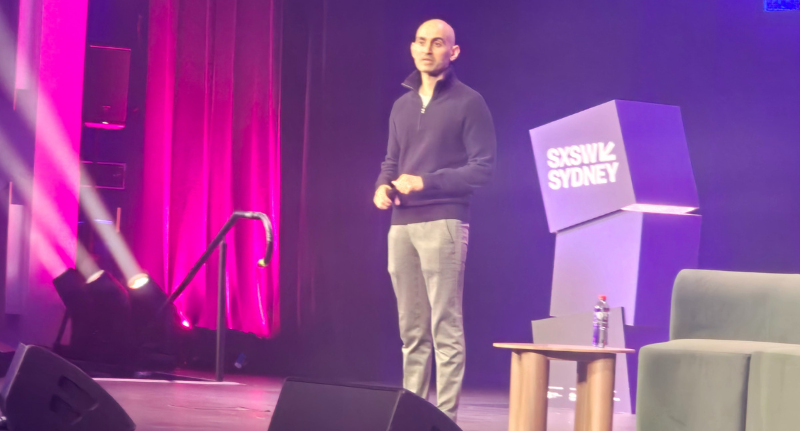
SXSW Sydney: Neil Patel says ‘Facebook is sexy’
In his keynote at SXSW Sydney on Tuesday, digital marketing guru Neil Patel said something few would dare to admit out loud: Facebook is sexy again.
“People think no one uses Facebook anymore,” he said. “If you ask your friends, no one talks about Facebook. But you know what’s really cool and effective about it? People like my mum use it.”
Stumbling on his amusing choice of words, he said: “You know what’s sexy about people like my mum? That sounds bad to say, you know what’s great about people like my mum using platforms like Facebook? She has money.”
It was a pointed reminder for marketers in the room, who are, instead, often steadfast on chasing younger audiences across TikTok and Instagram. Facebook’s demographic skews older, which Patel argued is precisely what makes it so powerful and profitable.
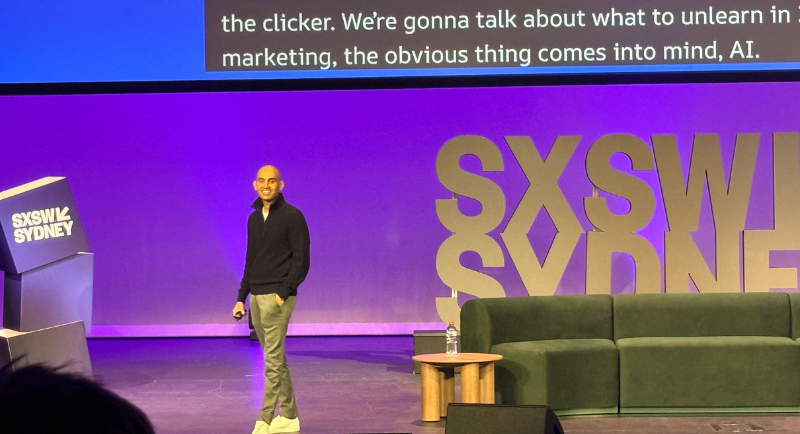
“People like my mum bought their houses 30 plus years ago when it was affordable. They bought stocks like Apple and Facebook when they came out and never sold them. They can swipe their credit car. They have money, they have disposable income,” he explained.
He joked that in comparison, when Gen Z “swipe their credit cards”, it’s usually backed by their parents… the people with the power.
“When you look at the Gen Zers, when they swipe their credit cards, it’s usually backed by their mums.”

While going viral and gaining cultural relevance amongst Gen Z is all well and good, Patel pointed out that engagement means nothing without purchasing power. The so-called “unsexy” platforms like Facebook are still among those driving the most sales.
When looking at product discovery and lead quality, he argued Facebook continues to perform.
“The money in marketing often comes from what people think is ugly.”
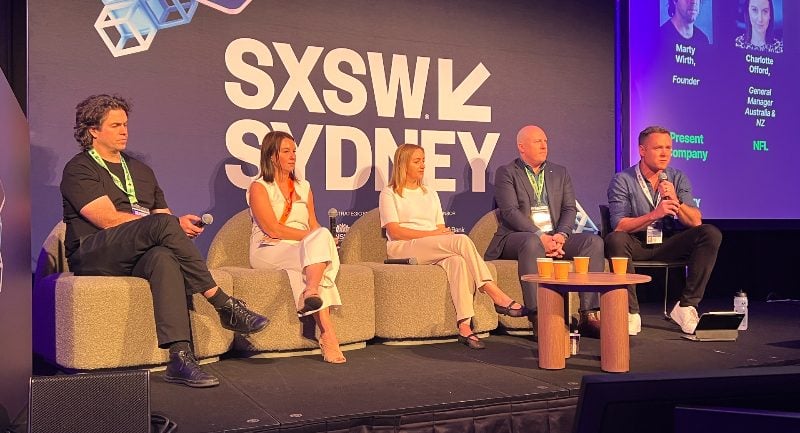
SXSW Sydney: Understanding the new rules of sports fandom with Leigh Lavery
Gone are the days of sports being defined by your dad on the couch watching the footy on the weekend.
Sure, that still happens in a lot of households, but sports today is more multi-platform with a far more diverse and inclusive audience. It is now commonplace to watch your favourite sport via clips on social platforms as it is to dedicate your entire weekend to watching full games.
Taking to the stage at SXSW was The Growth Distillery’s Head of Commercial Leigh Lavery. He moderated a panel that brought together a who’s who of sports execs who define what sports and sport fandom looks like in 2025 and beyond.
Joining the panel for The New Rules of Sports Fandom: Breaking the Model and Rebuilding with Tribalism was UFC Senior VP, Australia & NZ , Peter Kloczko, Bulldog CEO, Kim Anderson, NFL GM Australia & NZ ,Charlotte Offord, and Present Company Founder Marty Wirth.
In days, The Growth Distillery will release Sporting Nation 2025 – an annual report into the way we consume and engage with sports.
The panel at SXSW was an extension of the research that Lavery and his team have been doing around the economics of sports fandom.
During the panel, conversation focused on three types of sports consumer that Lavery and his team have identified:
The Fanatics – These are the heaviest consumers. They are Tier 1 sport obsessed, see sports as core to their identity, and consume 8 hours a week (or more) – 51 per cent of their consumption goes beyond live.
New Wave Fans – Seen as ‘digital curators,’ only 1 in 2 watch live per week with sports interest balanced across local and global sports. They’re digitally-led and consume around 5 hours a week – 65 per cent beyond live.
The Followers – These are the lightest consumers who are occasion-led in that they are there for sports as a social occasion. They’re watching around 3 hours a week, with 45 per cent beyond live.
Following the panel conversation, Mediaweek talked to Lavery about modern sports fandom, how the panel aligned with the report being released next week, and some big picture questions about the future of sport consumption in Australia.
Mediaweek: Having worked on this years Sporting Nation 2025 report, was there any surprises in what the panel had to say that surprised you at all?
Leigh Lavery: No real surprises, probably more just how much they were embracing these concepts. To be honest with you, before we did this study there were more hypotheses, if that makes sense.
What we’ve seen over the last few editions has been this shift beyond the live. And it’s something that we can see in the numbers. It’s almost like a sports census, you can see it in the numbers.
But when you actually get to speak to the real industry participants and hear from them firsthand around their experience of it, it’s really reaffirming what we’re observing.
Mediaweek: The study itself is designed for marketers to understand how to navigate the sports landscape, and particularly for them to find a pathway for growth.
Leigh Lavery: At The Growth Distillery, that’s what we’re absolutely focused on. We want to make pathways clearer for marketers to be able to navigate the noise, particularly in sport, but a lot of fields. Things are getting more complicated, noisier, and it’s creating a sense of overwhelm, not just for consumers, but for marketers.
What we try to do is take a holistic view of the landscape and look for where there’s reasons to be optimistic, and areas where maybe marketers should feel that there is an opportunity for growth.
Mediaweek: How much of the report then feeds back into News Australia as they shape their editorial and marketing?
Leigh Lavery: We want to be able to help give the executive and the editors at News Corp the ability to make better informed decisions over the sports they cover, how they cover them, the fans that matter, and probably the opportunities again for growth for News Corp.
We have a version that we create specifically for the News Corp business, and then what we try to do and what The Growth Distillery is all about, is it distils the best parts, or the parts that we think are most relevant for the market.
That way our partners and the people, the marketers that we speak to, can also benefit from the work.
Mediaweek: Sports reporting is no longer just confined to the sports section of a publication. I assume reports like this help set editorial direction around that cultural shift?
Leigh Lavery: The expansion of sports has a lot to do with the blurring of boundaries. Where does sport stop and where does entertainment and culture start?
It’s interesting, at News Corp there’s a really powerful statement around how we want to cover sport. We think there’s a lot of opportunities for getting behind or around the sporting field and getting more into behind the scenes, around the personalities behind sport, and really understanding the lives of these players.
That was one of the discussion points today – just how important the personality of these stars actually are and understanding the whole person, not just the athlete.
So that’s certainly an area where we see there’s a lot of pretty exciting opportunities for the news business, but also for our partners and also for other brands involved in sport.
Mediaweek: How many years has this been going for?
Leigh Lavery: This is our fourth edition out of five years. 2021 was our first study. I’ve worked on all of them.
Mediaweek: Would I be wrong in saying that it gets more interesting every year?
Leigh Lavery: It certainly does. What’s interesting about it is you’re seeing trends continue to evolve and some accelerate, some decelerate. And what I find interesting is sometimes the things that you think that will accelerate don’t quite pan out that way.
Mediaweek: Sports is always at the forefront of every major news technology coming through.
In 2021, we wrote some core thematics that we thought were going to be pathways for growth. And one of them was sport as an entertainment proposition. I remember when I put that down on the page and I talked to some of our exec crew, they sort of looked at me strangely.
I was explaining that the rise of docu-series, the rise of podcasts, the rise of the story behind the story, what the athlete’s going through off the field. And even a lot of these players and the audiences they’re generating on social media, they’re telling their truer selves, right? All of these things were indicators that there was a big opportunity coming.
Now we’ve seen in subsequent years, that’s probably accelerated beyond what we would have imagined. And that’s now a really powerful opportunity for, I think, all walks of sport. It is getting to know the people behind the player.
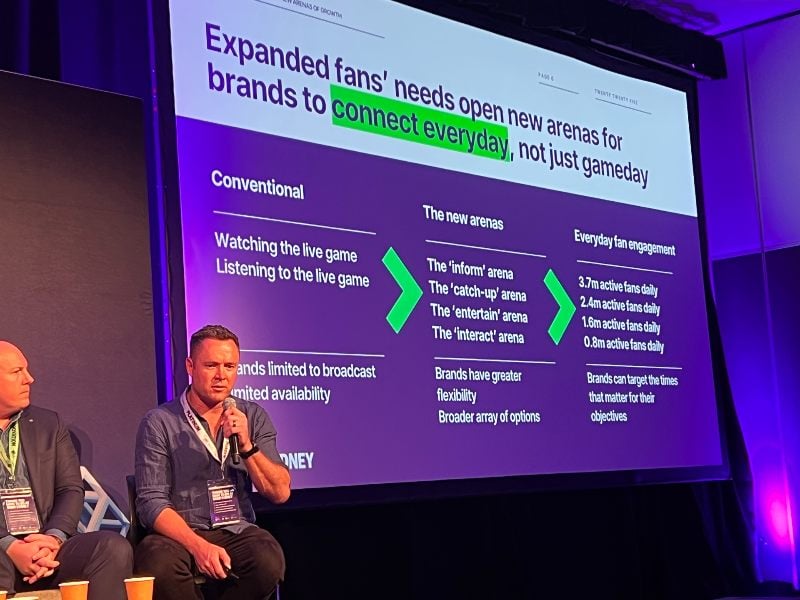
Mediaweek: Where is the majority of the growth actually coming from?
Leigh Lavery: It’s really a combination of it all. The number of people in Australia that now consider themselves a sports fan has got bigger. Of the 3.7 million new fans, there’s over a million that are female.
There’s a significant chunk are also culturally and linguistically diverse. We can say there’s this deeper engagement too.
What we’re seeing is that the Australian sporting diet is expanding. We’re no longer a country that has meat and three veg. We’ve got more interesting and diverse sporting tastes than we would have had, say, five years ago. Definitely ten years ago.
That creates opportunities for not only media, but also for brands that want to grow as well.
Mediaweek: Are new platforms like Kayo, Disney+, Paramount+, Stan Sports, Prime Video, and Netflix just offering a pathway for digital migration of traditional fans, or do you think they’re actually helping to create growth? Are the new fans only coming by way of social channels?
Leigh Lavery: I’d say it’s a combination of both. The level of access that fans now have to content is unlike anything we could have imagined, say, 10, 15, 20 years ago.
That’s opened up opportunities for fans to engage with a whole variety of different sports in a whole variety of different content formats and probably a whole variety of different shades of coverage that we couldn’t have fathomed years ago.
What we’ve seen is that with those eyeballs, the money’s following it. We can see that the investment in how to grow via sport is you’ve got to follow where people are spending their time and where they’re engaged.
Mediaweek: If viewer engagement is changing and the bulk of fans are consuming via clips and other platforms these days, do you think that weakens the need for sports to be available on free-to-air TV?
Leigh Lavery: Oh, look, it’s a really hard question. It’s a real balancing act between sport being accessible for everyone, because of the benefits it has to society and future generations, but there’s also commercial realities.
In this day and age, with our media landscape, particularly in Australia, you sometimes wonder, do we need to add extra layers of complexity to what’s already a pretty hard competition for some of our local players?
Sport, I firmly believe, is good for society. So we need to protect access to it.
But we need to also make sure that we give our local media players as much opportunity as possible to be able to compete with the global players in the coverage of not only our local sports, but all the sports that matter.
Mediaweek: Is sport the one shared cultural experience we have left?
Leigh Lavery: I’d say that and probably Taylor Swift. [laughs]
As the world continues to be shaped pretty rapidly by new technologies, sport’s going to have even more importance to society.

SXSW Sydney: Unlearn what you think you know about marketing
Digital marketing expert Neil Patel’s message was clear during his SXSW Sydney keynote: marketers are optimising for the wrong things.
“What people say is reality, isn’t. And what people say is working and where they’re spending their time and attention, in most cases is a waste of time,” he said.
Instead of chasing clicks, followers, and polished creative, he thinks the next era of marketing will rely on credibility, visibility across platforms, and proof of value, especially as AI reshapes discovery and decision-making.
From SEO to ‘search everywhere optimisation’
For a long time, SEO meant one thing – ranking on Google. But Patel argued the industry’s fixation on this is now outdated. From tracking domains and keywords, the biggest thing that has become clear to him is that search has exploded beyond Google.
While Google commands roughly 27% market share and remains the most trusted search tool with 13.7 billion daily searches, platforms like YouTube, Instagram, and Amazon each host billions of daily searches, and are growing.
So are AI platforms like ChatGPT, and Patel said marketers need to treat every single one as search engines in their own rights.
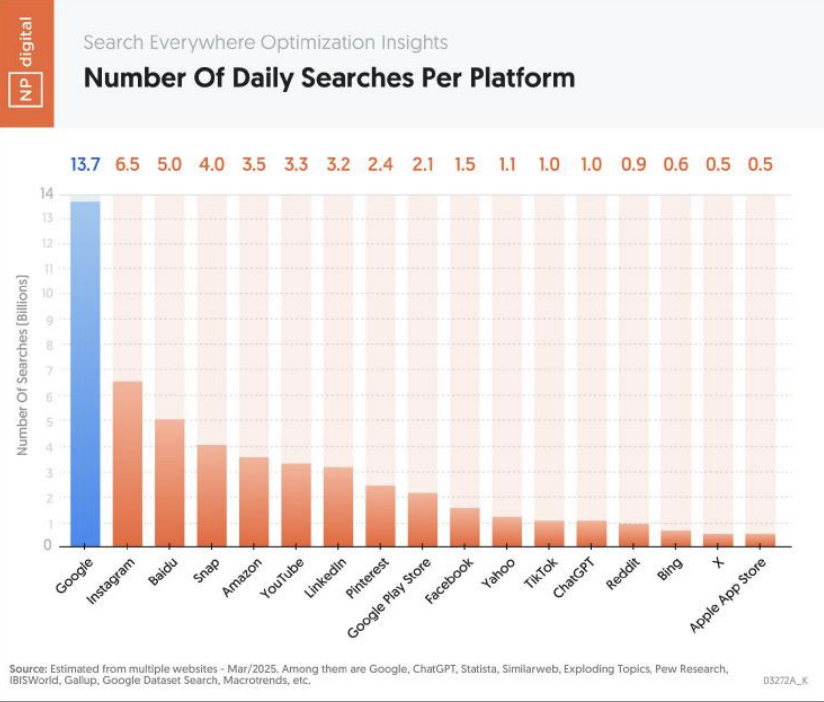
“No one’s talking about searching on Instagram, yet it gets 6.5 billion searches a day,” Patel said. “Amazon gets 3.5 billion a day, and you know those searches are much more valuable because people are actually buying something. The point I’m getting at, is you can no longer do SEO just for Google. We think SEO has changed from search engine optimisation to search everywhere optimisation.”
The three truths of marketing
Zooming in on APAC, Patel outlined three “operating truths” shaping marketing success: proof beats polish, language and culture shift performance, and platform strengths vary by category.
The first, is that audiences are tired of “overproduced” creative. According to NP Digital data, authenticity and relatability far outperform highly-polished videos – think someone candidly vlogging themselves, unscripted content, things along those lines.
Audiences, he said, are tired of overproduced creative. Authenticity and relatability far outperform slick campaigns, according to NP Digital data, with low-fi, self-show content often driving higher engagement than professionally produced videos.
“You don’t have to be perfect, you just gotta show people the proof,” he said.
He stressed the importance of language and cultural nuances, and how marketers must adapt according to the audience to improve performance – even down to the local spellings, colloquial tone, or culturally specific references.
The final truth is that there is no one-size-fits-all channel mix. LinkedIn, YouTube, and X, for example, are the obvious platforms for B2B lead generation, while Pinterest and Snapchat deliver stronger B2C conversions.
“Not all platforms are equal, depending on the product or service that you sell, if you’re B2B versus B2C,” Patel explained. “It’s about matching intent to platform.”
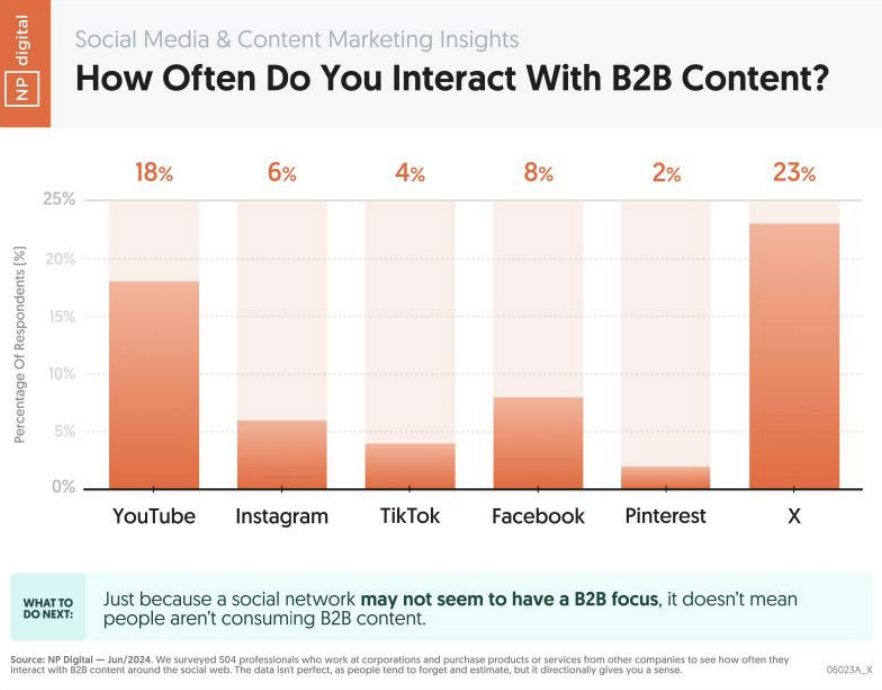
The rise of GEO
The latest AI impact on media and marketing has been the rise of GEO, or generative engine optimisation. As AI tools become discovery gateways, and people are increasingly using them to get answers, brands must optimise, he stressed, to be cited by these systems.
Where traditional SEO focuses on backlinks and keyword density, GEO prioritises structure, authority, and sentiment. He said brands should split their content roadmaps with one track to be ranked (SEO) and one to be quoted (GEO).
“Text still drives the internet,” he said. “If you’re not creating it, you’re missing out on visibility. Videos build awareness, but articles and data give AI something to actually cite.”
Taking it further, each AI platform requires its own playbook. According to Patel, Perplexity rewards depth and expertise, while Google AI Overview favours blogs, and ChatGPT prioritises authority and structured clarity.
APAC’s advantage
Patel said marketers in APAC are uniquely equipped for the new marketing era, because it already knows how to adapt. That is, to different languages, cultural nuances, and evolving platforms, every single day.
“That flexibility is what will win in the AI age.”
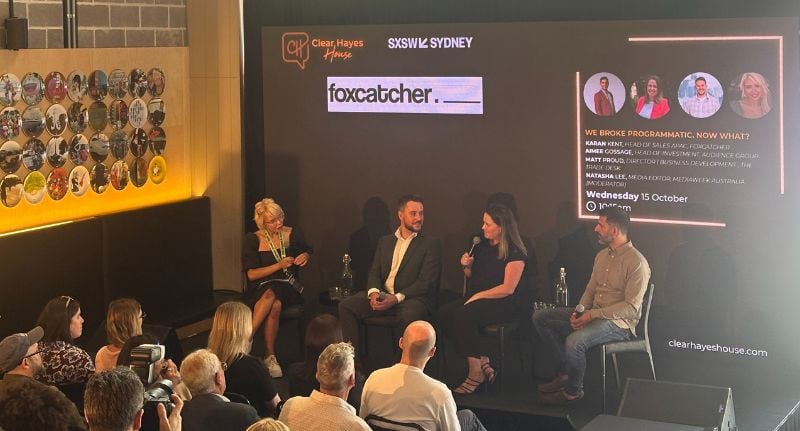
SXSW Sydney: Programmatic’s utopian promise still out of reach
As automation reshapes the media landscape, the promise of programmatic advertising, efficiency, precision, and scale, still feels tantalisingly out of reach.
That was the consensus from a lively industry panel featuring Foxcatcher’s Head of Sales APAC, Karan Kent; The Trade Desk’s Matt Young; and Audience Group’s Aimee Gossage, who unpacked where programmatic stands today, and where it keeps falling short.
The utopian promise
Kent opened the discussion with a pointed reflection on the gap between the industry’s expectations and reality.
“So when we enter the world of programmatic, it’s the utopian world where automation would run everything, time efficiencies, publishers would get more money, CPMs would drop, yields would improve paradoxically,” he said.
But the perfect picture never quite materialised.
“We were also promised that as consumers, we would see the most relevant adverts at the right time, we would see improved ROI, people would get their time back, we would target people on a one-to-one basis.
“And all this stuff about where the world can go, the reality is that that’s impossible,” he said, pointing to privacy shifts and the constant evolution of technology.
He added that even in an automated ecosystem, the human factor can’t be ignored.
“As technology evolves, humans have to keep up with that movement at the same time. I think that’s really challenging for everybody.”
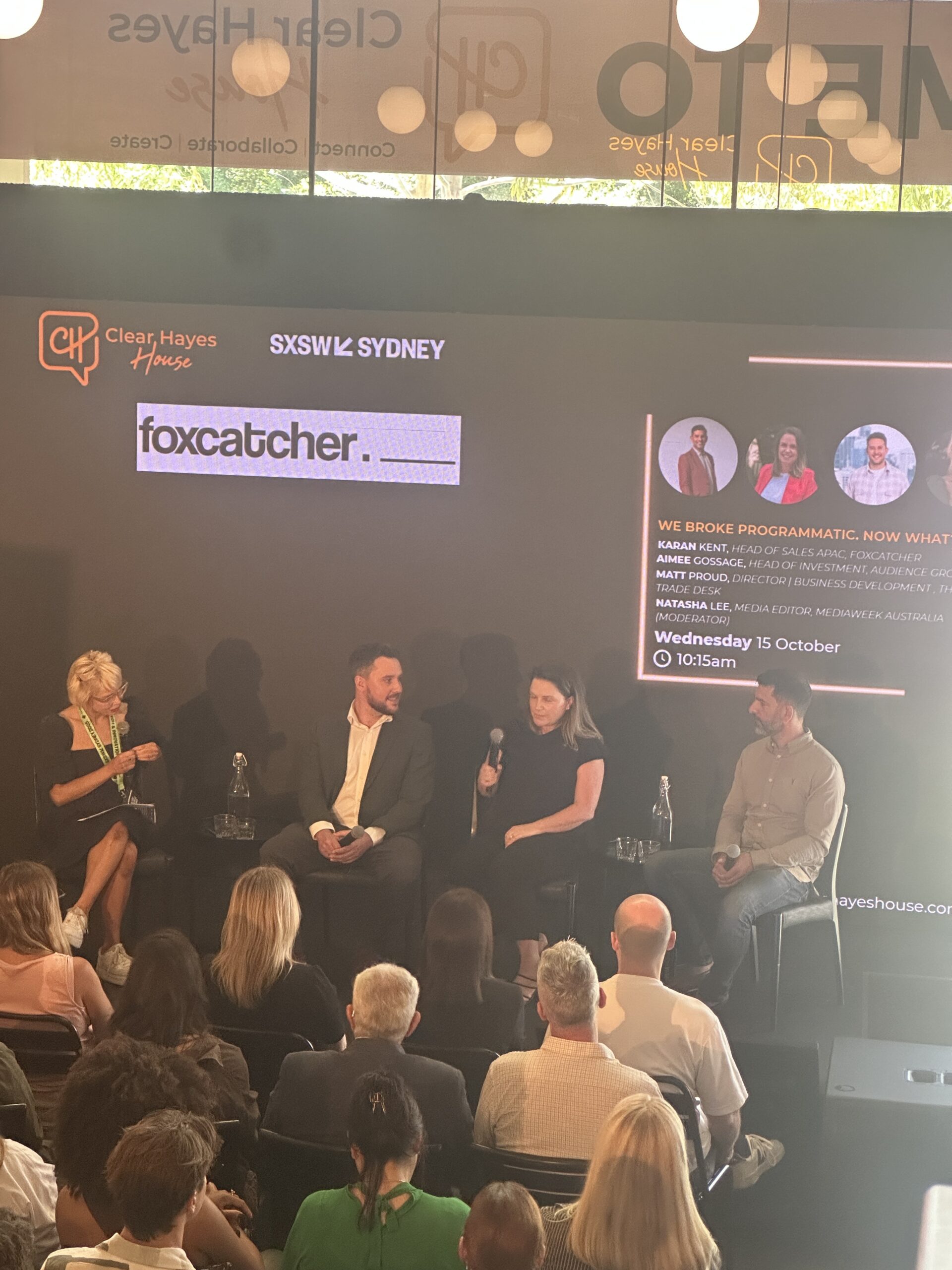
A decade on
For Gossage, who’s spent ten years in ad tech, the promise of simplicity has become one of the industry’s most enduring myths.
“Programmatic was really the up-and-coming technology that no one knew much about, but it was the place to be,” she said.
“There were still very much cookies. We could identify people or identify cookies, I should say. We were chasing faces, not just places. The utopian was direct-to-publisher-type inventory conversations.”
The problem, she noted, is that supply paths remain anything but direct: “We all know that supply paths are not direct, but we wish they were.”
A fragmented ecosystem
Young agreed the complexity has only deepened.
“Technology is constantly evolving. But it’s a fragmented marketplace.” he said.
“If we look back at what programmatic was when it was first on the earth, it was very much around web display. We’re looking at it now – audio, CTV, programmatic at home. We’ve got gaming in there as well. There’s retail capabilities. There’s been a huge amount of fragmentation.”
That fragmentation, Young said, has led to silos across the industry.
“Not just fragmentation amongst publishers across the open internet, but also these siloed gardens that are still within there as well. From a marketer’s perspective, I don’t envy the kind of issues that arise when you’ve got duplications or there’s something over here that isn’t talking to what’s happening over here.”
Still, he sees opportunity amid the chaos. “Programmatic presents an opportunity to learn through every single doorstep. It’s that accountability and accessibility that comes with it,” he said.
“At the end of the day, marketers are in the business of driving revenue, driving sales, driving brand awareness, and loyalty as well. So understanding what’s at the core of that and using that as your north star is key.”
The rise of MFAs and the messy middle
The conversation turned to one of the industry’s current flashpoints: MFA (Made-for-Advertising) sites. Gossage didn’t mince words.
“We’ve got MFA sites popping up, supply path challenges, and some people in the room might not realise that there’s 146 ways to buy one piece of inventory,” she said.
“Trying to cut out all of that rubbish in the middle to make sure we’re driving efficiencies for our clients.”
Having worked on both the sales and agency sides, Gossage said her focus now is on “sifting through a lot of the stuff” to find the best partners. “No one can be the best at everything,” she said.
“Sometimes you’ve got to connect a few of the best players to create what we would like to think is utopian.”
Transparency, trust, and the human factor
Kent said the programmatic dream of total transparency is still a work in progress.
“We were promised the world, free open transparency, no hidden fees, everyone would know exactly where their ad went, how much it cost, what fees were there,” he said.
“But there’s no evidence in this. And there’s like 5.5%… where are the hidden fees? Who’s taking a ticket? Is real money getting taken? Well, we need to have a clearer idea of where the money could spend and where it’s going.”
For him, the key lies in reconnecting strategy and execution.
“For this to become more efficient and more effective, the programmatic team have to have a policy at the table and they have to be involved in that initial conversation,” he said.
“The way a lot of agencies are set up, that separation of church and state, means the original KPI can get diluted before it even reaches the digital acquisition team.”
A call for clarity and collaboration
Across the panel, there was one clear through-line, that the industry’s biggest challenge isn’t automation or technology, but coordination.
As Gossage put it, “Our head of strategy is not across the digital landscape as much as myself and the team would be, so therefore she’s relying on us to be like, if this is what we’re trying to achieve, how will we do it?”
And when Young was asked about auctions and yields, his answer captured the paradox of progress: “Anyone can be a content creator, anyone can monetise their content, but whether or not it’s brand safe, brand suitable for our clients, a lot of the time, while we’re proactively blacklisting and allowlisting, new stuff pops up all the time. All the time.”
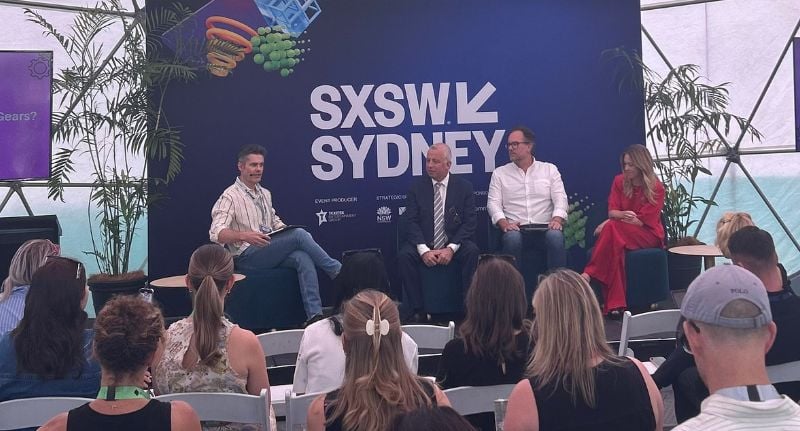
SXSW Sydney: Why small frustrations are fuelling brand opportunities
If there’s one thing uniting consumers, and marketers, right now, it’s frustration.
From endless logins (what’s my password, again?) to customer service black holes, our tolerance for friction is wearing thin.
But at a recent panel hosted by The Growth Distillery, industry leaders argued that those everyday annoyances could actually hold the key to innovation.
Moderated by James Taylor, Head of Research at The Growth Distillery, the discussion brought together Jason Davey, President of Growth & Customer Engagement at Ogilvy; Terri Hall, Managing Partner at TRA Sydney; and James Morrow, National Affairs Editor at the Daily Telegraph. Together, they unpacked the tension between technology, trust, and what it means to stay human in an increasingly automated world.
For both Morrow and Hall, the issue isn’t with technology itself, it’s with how often it overcomplicates the very tasks it’s meant to simplify.
“So many things grind my gears,” Morrow said. “One that really gets to me is this idea that technology, specifically AI, is supposed to make our lives easier.”
Instead, he argued, it often shifts the workload back onto consumers through endless logins, self-service check-ins, and DIY everything.
Hall agreed that while technology has enormous potential to empower, it too often leaves people feeling overloaded and disconnected.
“I am very much for AI and all that it offers, but there’s still something uniquely human about inspiration,” she said. “We hear this a lot from Australians too: we’re not anti-tech or anti-future, but we are forward-looking people who want to hold on to the things that make us different.”
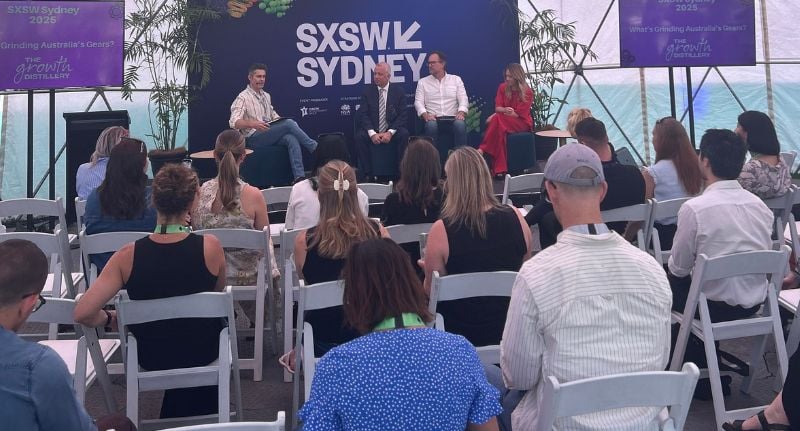
L-R: James Taylor, James Morrow, Jason Davey, and Terri Hall
When frustration becomes opportunity
Despite the frustration, the panel saw room for optimism, especially for brands that respond with clarity and purpose.
Sure, at times the tools designed to make things easier often end up creating new layers of friction, but, they argued, that is where the real opportunity lies for brands.
Davey pointed out that frustration can be the birthplace of innovation.
“There are so many great examples where long-standing industry issues went unaddressed, and those negative customer experiences ended up becoming business opportunities,” he said.
“Take the taxi industry, it resisted change for years until new players focused on improving customer experience and delivery. That shift has been global.”
Hall agreed that progress doesn’t always mean adding more tech.
“The convenience that Uber, and specifically Uber Eats, has impacted my creativity in the kitchen and the time I spend preparing meals at home,” she said. “It may have solved one problem but it’s created another one”.
The panel agreed that when technology starts to inconvenience the people it’s meant to serve, the brands that listen, and design around those pain points are the ones most likely to win back trust.
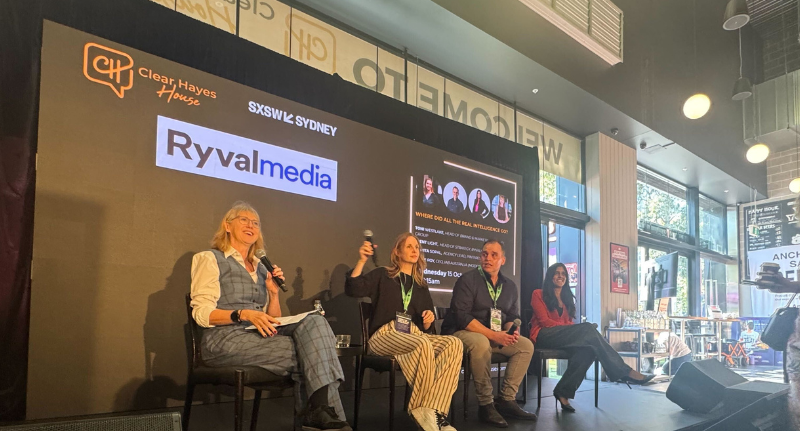
SXSW Sydney: Why the smartest marketers are putting friction back into the age of AI
Artificial Intelligence may be reshaping marketing faster than any technology in recent memory, but for a growing number of creative leaders, progress doesn’t mean removing every obstacle, it means putting some of them back.
At a SXSW Sydney panel discussion, Where Did All The Real Intelligence Go?, hosted by Ryvalmedia, marketing leaders from Big Red Group, Ryvalmedia, and Pinterest all landed on the same conclusion, friction, imperfection and curiosity, once seen as inefficiencies, are quickly becoming competitive advantages.
During the discussion, moderator Gai Le Roi from IAB, grilled Toni Westlake, Head of Brand and Marketing, at Big Red Group, Trent Light, Head of Strategy at Ryvalmedia and Namita Sopal, Agency Lead at Pinterest on how they use AI but critically how they ensure they get the very best from their team using it.
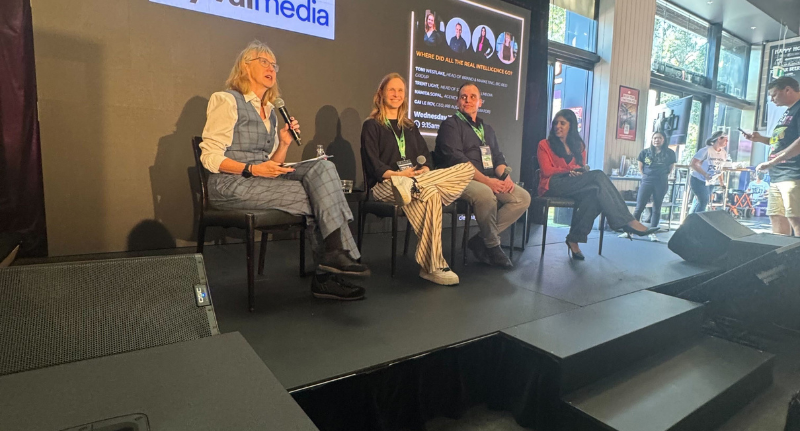
The human touch that AI can’t fake
Big Red Group’s CMO, Westlake, started the discussion by highlighting how she had learned a very hard lesson back in 2023 when the team ran a Christmas campaign fully generated by AI, and it failed spectacularly.
“We actually now have a rule that anything that touches the customer cannot be AI,” she said, explaining that she watched her CPC increase heavily in a campaign that was too perfect.
“We thought it was going to be a really great idea to do an AI generated campaign,” she said. “We actually had a real human but with a virtual production background that we wanted to create the feeling of the wonder of experiences as a gift for Christmas and so unsurprisingly, to probably everyone in this room, it didn’t work very well.
So what we saw, in terms of CPC was $1.28 and for us, for reference, the following Christmas, when we learned from all the mistakes, it went down to about 80 cents. Last Father’s Day it was closer to 20 cents.”
She explained that the work looked flawless but felt empty, “We realised it’s the imperfect moments, the hair in the face, the accidental snort when someone laughs, that make people feel something.”
“With our brand, it’s all about real human stories. It’s all about the connection that you get on those experiences. And weirdly, AI models looking absolutely perfect, staring glassily at you into the screen doesn’t really quite nail that.”
Now, Big Red Group does use AI for early-stage tasks like trend discovery, but not customer-facing content.
The lesson, Toni said, is that removing every creative constraint doesn’t make work better, it makes it forgettable.
AI can tell you what worked, but not why
For Ryvalmedia’s Trent Light, the risk isn’t just creative homogeneity, it’s intellectual laziness
“The tools are powerful,” he said. “But they only tell you what. They can’t tell you why.”
Light said he is now actively training teams to resist that automation trap. “We run hackathons where we don’t judge the output, we judge the thinking,” he said. “The tech is easy to implement. The harder thing is training people to ask better questions.”
He believes critical thinking, not just prompt engineering, will determine which agencies thrive in the next wave of AI adoption.
He also added Ryvalmedia place a real emphasis on remembering we are all customers, in a world of AI where we can rely on data for answers to briefs without using human instinct.
“I try and champion within the agency, this understanding that we are all also a consumer, ” he said. “And being able to test what you’re putting forward to the client.
“Most of us find ourselves in the target audience for most of the briefs that come through the door. When it comes to responding on a brief or finding insights, we seem to forget that we’re actually talking about ourselves. We are the customer too.”
The limits of extrapolation
Sopal added a further perspective. While Pinterest uses AI to enhance internal efficiency, she cautioned against over-reliance on machine intelligence for creative direction.
“AI can only extrapolate from what’s already been imagined,” she said. “Humans can imagine what hasn’t been thought of.”
Pinterest’s marketing team now uses automation for administrative tasks, sign-ins, queries, summaries, but relies on human judgement for decisions that shape tone, empathy and cultural nuance.
“If everyone can use the same tools to get to ‘good,’ taste and judgment are what make work great,” she said.
Light added, “Most more people are outsourcing and writing content like emails and blog posts with ChatGPT.
“AI actually needs human content, rather than content they’ve created themselves to use. So actually, it’s never going to evolve either.”
“Producing more human-made content that’s really clearly structured, that has some authority behind it, is going to be critical as we move forward with AI.”
Redesigning for meaningful friction
Across the panel, one theme recurred constantly, when everything becomes frictionless, meaning gets lost.
Pinterest’s workplaces are intentionally designed with what Sopal labelled “positive friction”, spaces that encourage slower, more thoughtful collaboration.
“I think it’s really simple,” she said. “But just getting together in person more and making that an opportunity to go above and beyond the day to day and lean into something you’re not necessarily working on can only be positive.”
At Big Red Group, Toni said curiosity is treated as a job requirement. “Anyone who believes they already know the answer probably doesn’t have space in my team.”
It was clear all the marketers aren’t rejecting AI, and while automation may accelerate output, creativity still depends on tension between data and instinct, speed and slowness, precision and imperfection.
You can read Trent Light’s recaps of his experience at SXSW here.
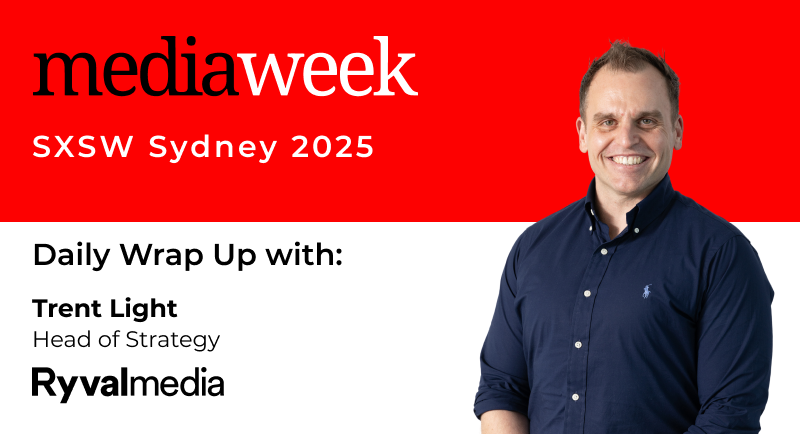
SXSW Daily Wrap 3: AI isn’t as powerful as you think, the programmatic ‘problem’ and marketing to the real Australia
Sydney really turned on the weather for day three of SXSW, with the whole precinct buzzing from early in the day.
I started my day at Clear Hayes House, appearing on a panel with the amazing Toni Westlake from Big Red Group and Namita Sopa from Pinterest to talk about how artificial intelligence is only as powerful as the intelligent humans running it.
Gai Le Roy from the IAB was the facilitator, asking probing questions and throwing a few curveballs to keep us on our toes as we discussed why the human brain still rules when it comes to intelligence.

Immediately following that session, I found a spare seat, smashed a few bagels, and heard leaders from The Trade Desk and Foxcatcher debate whether programmatic was broken and, if so, how we fix it.
Understanding programmatic
It was a provocative opening from Karan Kent of Foxcatcher, who mused about the “programmatic utopia” we were all promised. One where clients could reach the right audience at the right time with the right message, deliver greater ROI, and talk to their customers on a one-to-one basis at scale.
But somehow, this promise was lost along the way, in a murky lack of transparency and questionable inventory quality, which led to “programmatic” becoming a dirty word in the industry for some.
Matt Proud from The Trade Desk argued that programmatic doesn’t have a delivery or tech problem; it has a KPI problem. There is still work to be done in educating the industry on the possibilities of programmatic advertising and how it doesn’t just reach your audience, but also creates a feedback loop that helps clients learn about their audience.
Involving your programmatic partners earlier in the process is key to understanding what’s possible, which KPIs we should be optimising for, and how digital budgets are allocated across all platforms.
This collaboration is crucial for solving the trust dilemma. Ultimately, the more the industry understands how programmatic works, the more it will be valued.
Gen Z’s turn away from Google
For the afternoon, I tried to steer myself away from the AI discussion as I was starting to feel my own brain drain in real time.
I leaned more into the creative space, focusing on the instinctive human need for connection and community, rather than on brands trying to insert themselves into every moment of our day.
The “chronically online” gaming influencer Ella Lowgren ran a packed session about creating genuine connections with customers in the attention economy.
While focused more on building a personal community of followers, there were also many lessons for brands within the presentation.
The most important takeaway for marketers was the shifting nature of online search, particularly among younger generations.
While Google is still the king/queen of online search, more Gen Zs are turning to Instagram and TikTok for video content that shows and explains things through short form video, rather than just providing information.
The session also spoke about the need for brands to be consistent with their content and not just show up when they have something to sell.
Maintaining a connection with your audience by adding value to their online interactions is critical to building and maintaining brand trust.
Multicultural Advertising
I ended the day where I started, at Clear Hayes House, with an insightful session led by Andrew Howie of Gallant Collective Advisory about the constantly shifting demographics in Australia.
The title, “Australia’s Not White – So Why Is Your Marketing?” was deliberately provocative but also backed up with hard facts that all marketers need to consider when launching their next campaign.
More than half of Australians were either born overseas or have at least one parent born overseas, and more than 300 different languages are spoken in Australian households.
The session discussed the failure of marketing strategies to evolve alongside these cultural changes, with many growing communities being overlooked or underserved by content and advertising that resonates with them.
The clear takeaway is that multicultural advertising shouldn’t be a secondary thought or an add-on to “do the right thing”, it should be the starting point.
We need to understand that our “audiences” are no longer a homogenous group of people who all think, feel, buy, and interact with brands in the same way. A unified strategy that connects with ALL customers is critical to keeping up with the changing demographics of Australian society.
After a long day, I am going to take a break tonight, watch the latest episode of Task (Amazing show on HBO Max), and reflect on everything I have learned over the last few days.
Tomorrow is my final day at the conference, and I’m already looking forward to the sessions from our friends at News Corp Australia and, of course, Sir Martin Sorrell.
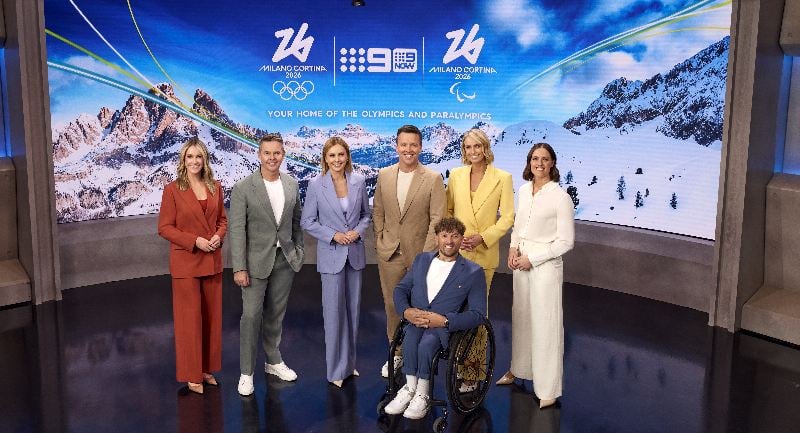
Nine Upfronts: 2026 Olympics leads a slate filled with defining Australian moments, sharks, and outback murder highways
The Olympics were front and center at Nine’s pitch to advertisers and media today with the 2026 Nine Upfronts.
Nine confirmed its full hosting and commentary lineup for the sporting event, while unveiling its roster of new and returning shows.
2026 Winter Olympics and Paralympics Milano Cortina
Nine has confirmed its full hosting and commentary lineup for coverage of the 2026 Winter Olympics and Paralympics Milano Cortina across the 9Network, 9Now and Stan Sport.
From February 4 with its preview show Let The Games Begin, the broadcaster will deliver 24/7 coverage including live sport, opening with the Opening Ceremony on February 6 and continuing into the Paralympics from March 6.
Hosting across multiple hubs
Ally Langdon and James Bracey will lead the coverage from the alpine village of Livigno, backed by Leila McKinnon and Todd Woodbridge, who will also contribute to commentary.
In Sydney, Sylvia Jeffreys and Dylan Alcott will host the morning segments from a cutting‑edge studio.
On the ground in Europe, Danika Mason and Damian Ryan will anchor from Livigno, Christine Ahern from Milan, and Lauren Tomasi from Cortina, delivering breaking news and on‑site storytelling.
Expert commentary team
Nine’s Winter sports commentary roster includes:
• Lydia Lassila, Olympic gold and bronze medallist
• Britt Cox, first Australian woman to win the Freestyle Crystal Globe
• Torah Bright, Olympic gold and silver medallist
• Stephen Bradbury, Olympic gold in short-track speed skating
• Jaclyn Narracot, Australia’s first Olympic skeleton medallist
• Jono Brauer, alpine skier
• Jye Kearney, professional snowboarder
• Steph Prem, pioneer in snowboard cross
• Sami Kennedy‑Sim, triple Olympian and ski cross specialist
• Mia Rennie, freestyle skier
• Luke Kneller, snowsport expert
These commentators will provide technical insight, athlete backstories and deeper context across 16 disciplines and 195 medal events. More than 3,500 athletes from 93 nations will compete, including over 50 Australians such as Jakara Anthony and Scotty James.
Venues and coverage locations
Milano Cortina 2026 will be the most geographically dispersed Winter Games in history, with events across eight locations:
• Milan: ice sports, speed skating and Opening Ceremony
• Cortina d’Ampezzo: women’s alpine, bobsleigh, luge, skeleton, curling
• Bormio (Stelvio): men’s alpine, first Olympic ski mountaineering
• Livigno: snowboarding, freestyle skiing
• Val di Fiemme / Predazzo / Tesero: Nordic events
• Anterselva / Antholz: biathlon
• Verona Arena: Closing Ceremony
Starting February 4, Nine’s preview show Let The Games Begin leads into two full days of live competition before the official opening. All coverage will air on Channel 9HD, 9GemHD, and be streamed live and on demand on Stan Sport.
When the Paralympic Winter Games commence on March 6, Ellie Cole, Australia’s most decorated Paralympian, will host the nightly highlights show. Up to 665 Para‑athletes from 50 countries will compete across six sports and 79 medal events.
Coming soon in 2025
• The Golden Bachelor – Hosted by Samantha Armytage in this heartwarming series, the Golden Bachelor Bear embarks on a heartfelt journey to find a soulmate, with Sam guiding him every step of the way as he seeks a partner who can share the joys and adventures of life’s later chapters.
• The Block Auction – In the heart of Daylesford, five couples have battled it out to deliver stunning, country-style luxury family homes that will soon go under the hammer.
• Love Island Australia – Returning to the lavish villa on the sexy Spanish island of Mallorca, host Sophie Monk will welcome another group of stunning single Islanders for season seven of Love Island Australia.
• Jamie Durie’s Future House – Jamie will enlist the nation’s most visionary builders and innovators to design and construct the ultimate “Future House” – a blueprint for homes that are eco-friendly, stunning designs that are not only built in less than three months but budget-conscious and accessible to everyday Australian families.
• Chateu DIY Australia – The program showcases Aussie château enthusiasts and owners as they uncover secrets, discover unpolished gems, and pick up bargains. Viewers will watch as they navigate all sorts of challenges – from crumbling ceilings and timeworn turrets to dreaded termites – in transforming their château dreams into reality, and leaving a lasting legacy in the stunning French countryside.
• 2025 Melbourne Cup Carnival – Coverage kicks off with Howden Victoria Derby Day on November 1 and concludes with VRC Champions Stakes Day on November 8.
• Pacific Championship Rugby League – Teams from Australia (Jillaroos), New Zealand, Samoa, Papua New Guinea, Fiji, Tonga and Cook Islands will line up each weekend from Saturday, October 18 through to November 9, with 14 hard-hitting fixtures for Pacific supremacy.
• Rugby League Ashes Australia v England – Making its return after a 22 year absence, rugby league Ashes games will be played on three consecutive Saturday nights with games at Wembley in London (Oct 26), Liverpool (Nov 1) and Leeds (Nov 8).
• Golf – First up from November 27 is the BMW Australian PGA Championship at Royal Queensland, then it’s on to the men’s Australian Open in Melbourne from December 4 on the famous Melbourne Sandbelt at The Royal Melbourne Golf. Two women’s major golf events will be broadcast with the standalone women’s Australian Open and Australian WPGA Championship in March.
• Swimming: Australia vs The World – Australia’s internationally acclaimed swimming team is back when Australia takes on The World in a one-day shortcourse event on December 12 in Brisbane.
• Sydney Hobart – Renowned for its fierce competition and breathtaking scenes of Australia’s coastline, the Sydney Hobart is a staple of the Australian summer and a Boxing Day tradition.
• WNBL – 9GO! will air a weekly game across the home and away season with 9Now streaming every match live and free.
• Christmas with Delta – Delta Goodrem returns to host her star-studded Christmas extravaganza. Joined by a selection of her famous friends, this holiday special promises an evening of cheer and unforgettable moments.
• Vision Australia’s Carols By Candlelight – Audiences can look forward to hosts David Campbell and Sarah Abo leading the festivities. The magical evening will be broadcast live from Melbourne’s Sidney Myer Music Bowl at 8.00pm on Channel 9 and 9Now.
• Topknotz – A new program coming to Channel 9 that dives into the world of water and marine leisure like never before. Hosted by Tom Williams, Rob Palmer, Grant Denyer, Miguel Maestre and Felicity Palmateer, TopKnotz is part fun, part chat, part adventure, part human interest and all splash-filled adventure that transports viewers to amazing locations across the globe.
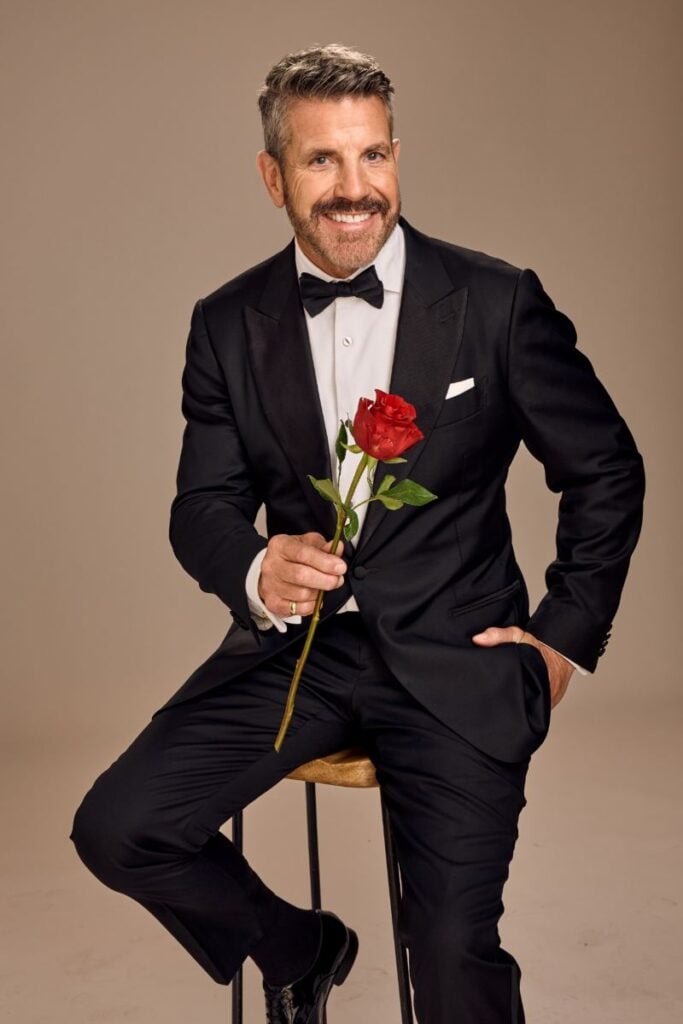
The Golden Bachelor, ‘Bear’
New in 2026
Shark!
In this groundbreaking, terrifying new format, SHARK!, a group of Australian celebrities travel to the shark capital of the world, the Bahamas, to confront their greatest fear.
They will be guided by Australian shark attack survivor Paul de Gelder.
The celebrities braving the challenge include one of Australia’s favourite hosts Scott Cam, 4-time Olympic Gold medalist Ariarne Titmus, alongside four other prominent personalities to be announced soon.
Our celebrities will face high-tension, heart-stopping shark challenges that escalate in danger and intensity, from the safety of a protective cage to the ultimate test: an open water swim with one of the most aggressive of all sharks.
SHARK! will push our celebs minds and bodies to the limits. How will they fare when they face their greatest fears? Will they be brave enough to take it to the next level? Out of the water, stripped bare of their public personas, these stars will share their raw, unfiltered emotions in post-dive confessions in what will prove to be a life changing experience.
This adrenaline-fuelled series will push people to the brink so they can learn to love the most feared predator on the planet.
SHARK! is produced by ITV Studios Australia for the 9Network.
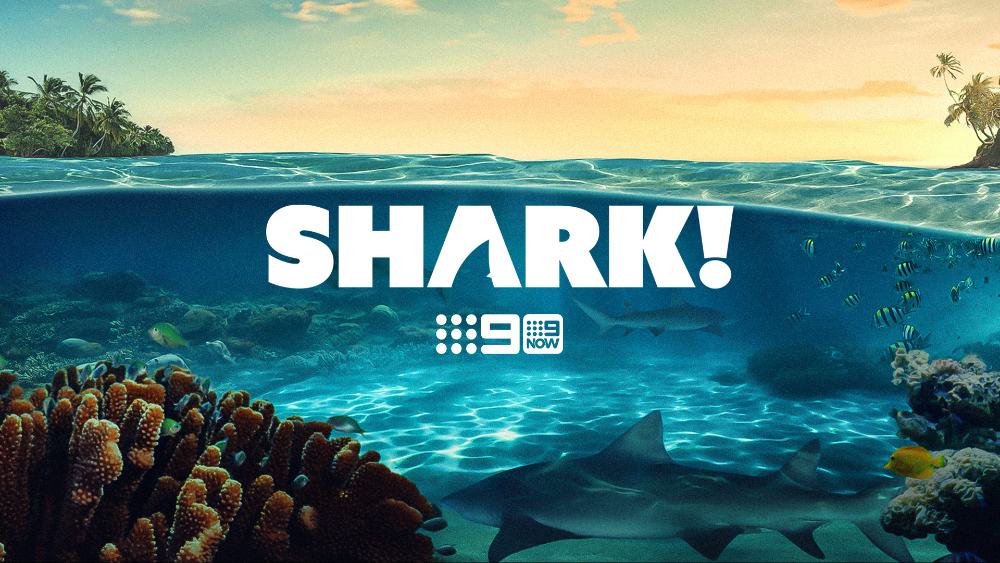
1 Euro House
Renowned interior designers Shaynna Blaze and Darren Palmer take on the ultimate renovation challenge in 1 Euro House, as they transform a dilapidated one-euro property in the Italian village of Castronovo into a spectacular dream home.
In this series the duo passionately reinvent key spaces, infusing each one with unique character through clever styling and structural vision. No detail will be overlooked as they transform every corner of the home, teaming up with local Italian artisans to incorporate handcrafted designs and custom furniture to root the home in its stunning surroundings.
Much more than just a makeover program, 1 Euro House also explores the richness of Italian life, blending travel, culture and friendship. The series culminates in a joyous celebration and emotional reveal, proving that with creativity and community, the most forgotten spaces can be brought back to glorious life. Each episode features incredible transformations with room reveals showcasing the bold and beautiful outcomes of the rebuild.
1 Euro House is produced by Abode Entertainment for the 9Network.
Outback Murder Highway
Focusing on Queensland’s desolate 800-kilometre Flinders Highway, Outback Murder Highway is an immersive investigation into one of Australia’s most notorious murder hotspots. This stretch of road holds a deadly reputation, having been the scene of some of Australia’s worst crimes, many still unsolved. Between 1970 and 2017, eleven people vanished or were brutally murdered along this treacherous route… And our team thinks there could be more victims.
The series features an FBI-trained criminal profiler, a prominent former homicide detective, and a criminologist turned archaeologist. Each episode reinvestigates these cases, unearthing new angles in the cold case crimes, as the experts brave the vast, isolated expanses of the highway, where hundreds of kilometres can separate travellers from safety.
New theories emerge, with startling evidence suggesting some of Australia’s worst serial killers, including the notorious Ivan Milat, used the Flinders Highway as their early hunting ground. The families of the victims continue to search for answers about their loved ones, and the highway’s dark secrets reveal a sorry history of death and disappearances that continue to the present day.
Outback Murder Highway is produced by Ronde Media for the 9Network.
Events That Changed Australia
Events That Changed Australia is a powerful new series that explores significant events and moments that have shaped our nation. Through bold storytelling and trusted voices, it invites viewers to reflect on the past, understand the present, and envision the Australia of tomorrow.
Each episode will examine a major event, exploring its profound impact on Australian society through rich archival footage and expert commentary from influential figures such as politicians, famous Australians, social commentators, and journalists, including Ally Langdon, renowned journalist and host of A Current Affair, and Channel 9 reporters who covered the events as they unfolded.
The series delves into landmark events such as the Cronulla riots, the devastating Black Saturday bushfires, the Bali bombings and the Lindt Cafe siege, which all altered the course of Australian history. It also looks into momentous topics like the stunning impact of World Series Cricket on professional sport, same-sex marriage, Australia’s criminal underbelly, gender equality in sport, and even the enduring image of the lovable Aussie bogan, to paint a vivid picture of a country in constant transformation.
Events That Changed Australia is produced by Ronde Media for the 9Network.
Beyond The Dream: Milato Cortina 2026
Following Paris 2024, the landmark documentary journey Beyond The Dream continues ahead of Winter Olympics Milano Cortina 2026.
Australia, “the sunburnt country”. How does a nation synonymous with world-famous beaches and melting heat manage to claim gold at the Winter Olympics? From the historic six gold medals Australia has claimed, to the incredible moments that defined Winter Olympics history, this documentary celebrates the perseverance, resilience and ingenuity of our underdog champions.
We hear from the legends and biggest names in Winter Olympics history as they recount their triumphant paths to gold, and never before seen access to follow Australia’s biggest gold medal hopefuls as they travel the globe to prepare for their chance at Milano Cortina 2026 in their quest to become Olympic champions.
Prepare to be inspired by the raw power, grace, and untold stories of the athletes who conquer snow and ice. This is more than a documentary; it’s a celebration of the Australian spirit and the pursuit of Winter Olympics glory.
This documentary is produced by the 9Network’s Wide World of Sports in association with Good Shout Productions.
Naked City: Hitmen
Coming to the 9Network in 2026 is the three-part crime documentary, NAKED CITY: HITMEN. Presented by respected crime journalist John Silvester, the series explores the evolution of Australia’s deadliest guns for hire.
They didn’t start out as killers. They were stick-up men, bag snatchers and armed robbers on the bottom rungs of Melbourne’s underworld ladder. This landmark program traces the way petty criminals became cold-blooded executioners, from the rise of Carl Williams, a suburban pill pusher who built a criminal empire out of revenge, to the deadly inner circle he assembled.
The inside story of Melbourne’s most prolific contract killers is revealed, including the volatile triggerman Andrew Veniamin, the feared and methodical Rodney Collins, and the quiet operator Stephen Asling. Told for the first time on the record through the eyes of the police, prosecutors, and judges who stared the hitmen down in court, this series features never-before-released audio, telephone intercepts, and confidential documents. It’s the evidence that shows these assassins were ruthless, calculating contractors always on the clock.
NAKED CITY: HITMEN is directed and produced by Michael Venables ADG & Graham Watson with JAM TV for the 9Network.
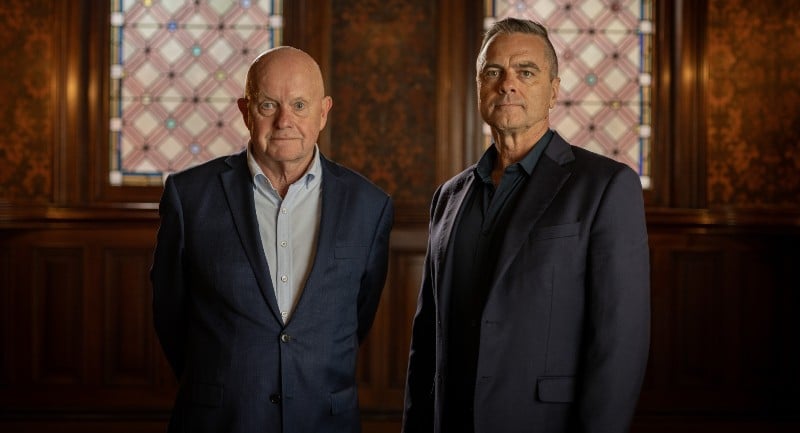
John Silvester (L) & Stuart Bateson (R)
Returning in 2026
Married At First Sight
Australia’s No. 1 entertainment program and most talked about social experiment, Married at First Sight, is set to return for a keenly awaited 13th season in 2026.
The new season of the ratings powerhouse that delivers unparalleled drama, heartwarming connections and unforgettable moments, is poised to once again bring even more love, romance, passion and drama as a brand new set of hopeful singles from all over Australia take the huge leap of faith and embark on their marital journey in this unique pathway to finding true love.
Viewers will be captivated by the breathtaking weddings and honeymoons, dramatic dinner parties and emotional and confronting commitment ceremonies.
In 2026, our familiar trio of experts return: certified clinical sexologist Alessandra Rampolla, relationship experts John Aiken and Mel Schilling, matching the singles and guiding the couples through their ultimate test of building genuine, long-lasting relationships.
Take your front row seat when Married at First Sight returns to captivate the nation and spark conversations across Australia, as the next set of brave participants navigate the complexities of marrying a stranger in their quest for real love.
Married at First Sight is produced by Endemol Shine Australia (a Banijay Entertainment company) for the 9Network.
The Block
In 2026, Australia’s favourite renovation show, The Block, is heading to the coast for another landmark destination.
Mount Eliza is a highly sought-after, picturesque bayside location which is perfect for The Block’s 22nd season. The suburb boasts beautiful secluded beaches like Canadian Bay and Ranelagh Beach, and a strong sense of community with boutique shops, cafes and gourmet grocers.
Just over an hour’s drive from Melbourne’s CBD, Mount Eliza is a serene seaside suburb that marks the gateway to the stunning Mornington Peninsula. Known for its lush landscapes and beautiful bay views, it’s the first coastal gem you’ll encounter on your way to Sorrento and Portsea.
Here co-hosts Scott Cam and Shelley Craft, along with five eager new teams, will relocate to a prime development site on Old Mornington Road. The builders will be challenged to add luxury resort-style living to five family-sized homes, all with an eye on water views.
Since premiering on Channel 9 in 2003, Australia’s toughest building challenge has awarded a total of $39,627,139.63 in prizemoney.
The Block is a Nine production in conjunction with Cavalier Television.
LEGO® Masters Australia
Prepare for an unparalleled spectacle as the 2025 TV Week Logie Award winner of Best Competition Reality Program returns. In 2026, the special event series LEGO® Masters Australia – Bricktacular will feature some of the world’s biggest entertainment brands to push imagination to new extremes, with jaw-dropping builds and creative genius beyond belief.
For the first time ever, the competition will feature four powerhouse trios of the most popular fan-favourite champions from Australia and around the world. These masterful builders will face epic themed challenges inspired by the fantastical world of Lord of the Rings, the awe-inspiring universe of DC Heroes, the extraordinary adventures of Bluey, and the prehistoric thrills of Jurassic World.
Across four high-stakes, action-packed episodes the teams’ creativity, teamwork, and technical expertise will be pushed to the absolute limit.
Host Hamish Blake, who is joined again by Ryan “Brickman” McNaught and Sophie Monk, said: “In today’s hectic world, who’s got time for a regular old long series, we thought a short sharp event season where its finals from episode one was the way to go!”
One team will rise above the rest and be crowned the champion LEGO® Masters – walking away with global bragging rights and a massive $100,000 Grand Prize.
LEGO® Masters Australia is produced by Endemol Shine Australia (a Banijay Entertainment company) for the 9Network.
The Floor
Get ready for Round 2! After a record-breaking premiere that Australia couldn’t get enough of, the hit trivia sensation The Floor is back — bigger, bolder, and more intense than ever.
Host Rodger Corser returns to guide a new class of 81 of Australia’s sharpest minds as they battle for the ultimate prize of $200,000.
This season, the competition is tougher and the strategy more ruthless. The core of the game remains: each contestant defends their tile of expertise, challenging their neighbours to winner-takes-all trivia duels to seize control of The Floor. With fresh contestants, brand-new subjects, and unexpected twists, the game has been elevated to a whole new level.
The Floor has cemented itself as Australia’s boldest new game show, delivering must-see family viewing that everyone can play along with. Who has what it takes to dominate? Find out when The Floor returns in 2026 on the 9Network.
The Floor is a Talpa format produced by Eureka Productions for the 9Network.
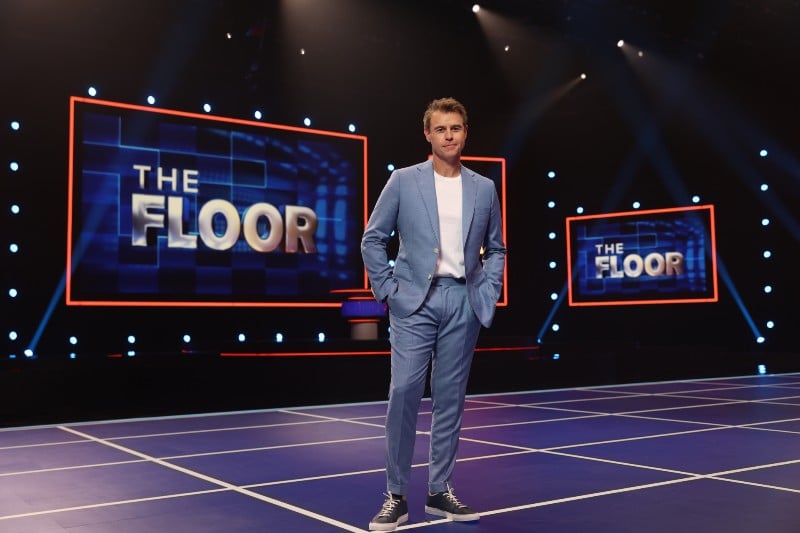
Travel Guides
After recently winning its fourth consecutive TV Week Logie award for Best Lifestyle Program, Travel Guides is back in 2026 for another lap around the planet, delivering more gobsmacking destinations and belly laughs than ever.
All of our beloved Guides will return, with the Fren Family, Kevin and Janetta, Matt and Brett, Kev, Dorian and Teng, and Karly and Bri bringing their fabulous, funny, unfiltered opinions on all things travel.
And excitingly, they’ll be joined by a cast of Travel Guides newbies, some you will recognise, with fan favourites Lucinda and Andie from MAFS, Eliza and Liberty from The Block, Callum and Mitch from Love Island, and award-winning country music couple Brooke and Adam all packing their bags and hitting the road. There’ll also be some fresh faces grabbing their passports and joining the fray, like best mates Tash and Meryl, and Brisbane mums Nicky and Connie.
Together they’ll visit ten of the most extraordinary destinations across Australia and around the world: grabbing a Guinness in iconic Ireland, living out their Lion King dreams in Tanzania’s Serengeti, partying til dawn in raucous Rio de Janeiro, and donning an Akubra for the Mount Isa rodeo.
From the airlines they fly to the hotels they bunk down in and the wild adventures on their itinerary, our cast’s vastly different perspectives prove time and again that one person’s idea of holiday perfection is another’s idea of total hell.
Narrated by Aussie comedian and actress Denise Scott, Travel Guides is produced by the 9Network.
Tipping Point Australia
Looking ahead to 2026, the afternoon TV powerhouse Tipping Point Australia is set to return for its third thrilling season on the 9Network. After capturing the nation’s attention since its 2024 launch, the program has firmly cemented itself as Australia’s No.1 afternoon game show.
9Network presenter and host Todd Woodbridge will be back at the helm, guiding a new slate of contestants as they test their knowledge and nerve against the Tipping Point machine. With life-changing cash and prizes on the line, the combination of strategy and luck will continue to keep Australian families on the edge of their seats.
Tipping Point Australia is produced by Endemol Shine Australia (a Banijay Entertainment company) for the 9Network.
The Hundred With Andy Lee
The Hundred with Andy Lee is back, bigger and better than ever, returning to the 9Network for its 9th season in 2026.
The show that uncovers what Australians are really thinking sees 100 everyday Aussies zooming into the studio, each carefully selected to represent a cross section of our vast country.
This season comedian Mike Goldstein and media sensation Sophie Monk continue as regular panellists and will be joined by the cream of Aussie comedy; Joel Creasey, Kate Langbroek, Pete Helliar, Denise Scott, Hamish Blake, Glenn Robbins, and Dave Hughes to name just a few, battling it out to prove who knows Australia best.
Leading the charge of famous guests to Face The Hundred, the Prime Minister of Australia Anthony Albanese steps into the hot seat, paving the way for others including Cody Simpson, Janine Allis, Max Gawn, and Samuel Johnson to see just how many people can put a name to their faces.
Popular segments Trial By A Hundred, This or That, Match ‘Em and Is That Legal make their anticipated returns along with a number of themed episodes.
The Hundred with Andy Lee is an original concept by Screentime Australia and Andy Lee, produced by Endemol Shine Australia (a Banijay Entertainment company) in association with Channel 9.
Emergency
Returning in 2026, Emergency invites viewers behind the closed doors of one of Australia’s busiest trauma hospitals, for an even more revealing exploration of life inside the high-stakes, fast-paced world of trauma care, where every second counts.
The new season introduces a compelling blend of new faces alongside returning favourites, with fresh perspectives and unwavering empathy. It offers a rare and powerful window into the compassionate dedication, seamless teamwork, and unparalleled medical expertise that patients and their families rely upon during their darkest and most vulnerable hours.
Viewers will witness the harrowing challenges and profound rewards of a career in trauma medicine as Emergency skilfully weaves in moments of unexpected humour, profound hope and undeniable humanity, reminding us of the enduring spirit of those who care and those who are cared for.
Emergency is produced by WTFN exclusively for the 9Network.
Space Invaders
Space Invaders is returning for a sixth season, with our compassionate team ready again to help families struggling to find the happiness they once felt in their homes and their hearts by managing the overwhelming amount of clutter affecting their lives.
Join decluttering expert Peter Walsh, renovation specialist Cherie Barber and keen collector Angie Kent as they guide families through mountains of household storage challenges.
Our Space Invaders understand that renovations and transformations can be just too hard, so they offer practical decluttering strategies and emotional support. Peter thoughtfully addresses the physical and emotional impact of clutter on homes and relationships, encouraging families to cultivate better, peaceful environments. Cherie undertakes realistic and transformative renovations to elevate living spaces, creating a new sense of calm, while Angie specialises in uncovering hidden treasures that often have a remarkable family history.
This new season aims to give people more valuable tips, and the encouragement they need to create spaces that instill a home life of stress-free organisation and harmony.
Space Invaders is produced by WTFN for the 9Network.
Paramedics
In 2026, Paramedics returns with gripping stories from the frontlines where every second counts in the fight to save lives.
The new season delivers even more intense, real-life drama and powerful displays of humanity as the paramedics face unexpected obstacles that push their expertise and endurance to the limit. But amid the tension, there’s also space for light-hearted moments and genuine connection, as they bring not just medical care but warmth, wit and heart to every callout.
Paramedics is produced by WTFN production for the 9Network.
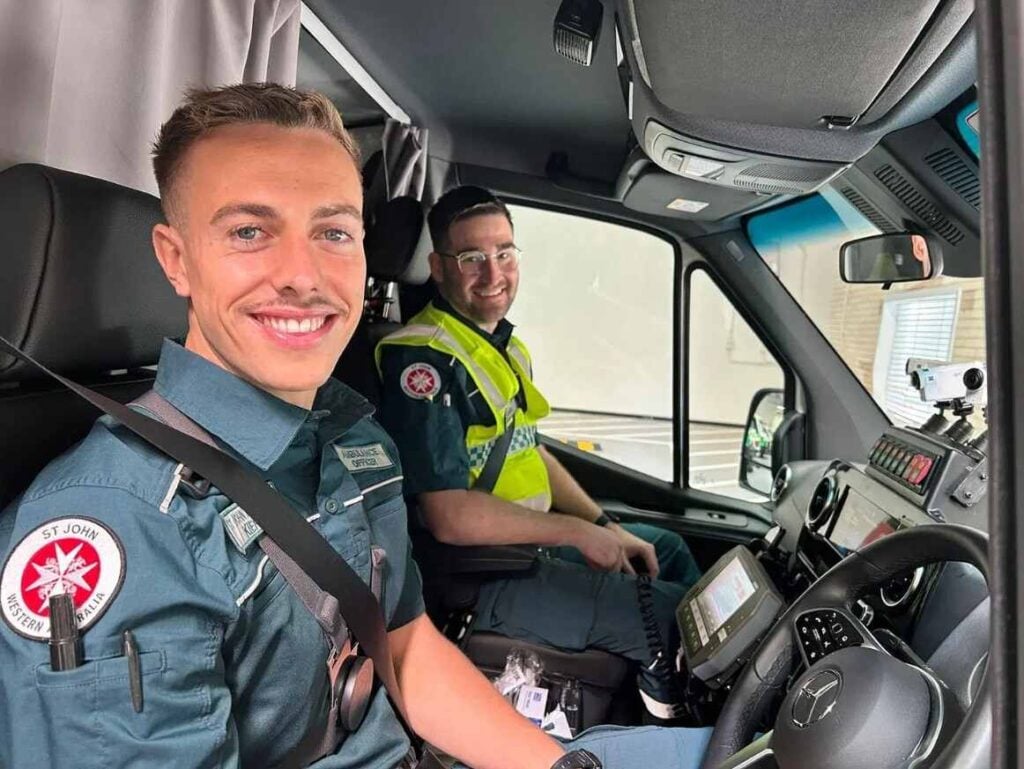
Vision Australia’s Carols By Candlelight
Australia’s favourite Christmas tradition, Vision Australia’s Carols by Candlelight will make a return in 2026.
Broadcast live from Melbourne’s Sidney Myer Music Bowl on Christmas Eve, the magical evening will see some of Australia’s best performers light up the stage to support children who are blind or have low vision.
60 Minutes
60 Minutes maintains its position as Australia’s leading weekly current affairs program, setting the national agenda every Sunday night. For over four decades, 60 Minutes has held power to account, and this year again delivered critical public interest journalism that shaped the national conversation.
Led by Australia’s foremost journalists, Tara Brown, Nick McKenzie, Amelia Adams, Dimity Clancey, and Adam Hegarty, the team’s unmatched dedication to uncovering the truth consistently drives public debate and policy change.
Building on the phenomenal success of its multi-platform strategy, including the 24/7 channel on 9Now and the Extra Minutes podcast, 60 Minutes continues to expand its audience reach effectively. In 2026, the program returns to deliver high-impact investigations and exclusive reports that hold institutions accountable.
A Current Affair
For decades, A Current Affair has held a unique place in the hearts and homes of Australians, and in 2026 it continues its reign as the nation’s undisputed No. 1 daily current affairs program.
Guided by the trusted and tenacious Ally Langdon from Monday to Friday and the insightful Deb Knight on Saturdays, the program is the essential daily destination for news that matters to mainstream Australia.
At its core, A Current Affair is a powerful advocate for everyday Australians. It is famous for championing the underdog, standing up to big business and holding governments to account, securing tangible, real-world outcomes for those who need it most.
The program consistently sets the national agenda with exclusive, news-breaking stories and in-depth investigations that drive conversation. Yet, it also captures the lighter side of life, exploring the quirky characters and remarkable tales that reflect the true fabric of our nation.
Every night, A Current Affair delivers a powerful blend of information, investigation, and inspiration that not only captures attention but genuinely resonates with the lives of its viewers. It is this deep connection and unwavering trust that makes it an essential daily viewing habit and a premier environment for brands to connect with the heart of Australia.
9News
In a complex world, Australians consistently turn to one place for news they can rely on: 9News, the nation’s most trusted source.
For 2026, 9News is accelerating its digital evolution, delivering more premium news content to more Australians across more platforms than ever before.
At the heart of our strategy is a true omnichannel approach. We are breaking down the barriers between platforms to deliver seamless news experiences across broadcast, 9Now, nine.com.au, mobile and social. This is all driven by our central news division – the powerhouse behind 9News, Today, A Current Affair and 60 Minutes.
Our authority is guaranteed by Australia’s most trusted voices. Experts Effie Zahos and Chris Kohler are joined by an expanded team of digitally-native journalists and producers, ensuring comprehensive and expert reporting on the issues that count.
Building on its success as a premier digital-first product, The Brief on 9Now will continue to offer audiences a deeper perspective on the key stories shaping our world. It stands as a prime example of how we engage Australians with world-class journalism on Nine’s owned and operated network.
For advertisers, our cross-platform dominance creates unmatched opportunities for integration. We provide a brand-safe, highly effective environment to connect with audiences, ensuring partnerships that deliver real impact and measurable results.
Today
Today is the breakfast show that kick-starts Australia’s daily conversation, hosted by Karl Stefanovic and Sarah Abo. Joining them are Jayne Azzopardi with the news, Renee Bargh and Richard ‘Dickie’ Wilkins on entertainment, Danika Mason covering sport, and Tim Davies with the weather, all connecting with viewers from coast to coast.
In 2026, Today will continue to be a morning ritual, delivering the latest in news, current affairs, sport, politics, showbiz, lifestyle, and more.
Offering a fresh and light-hearted take on news, entertainment, and celebrity gossip, Today Extra returns each weekday from 9.00am, hosted by Sylvia Jeffreys and David Campbell.
And ease into your weekend with Alison Piotrowski, who will be joined by a new co-host to be announced soon, along with news presenter Lizzie Pearl and weather presenter Dan Anstey for everything you need to know from Australia and around the world with the Weekend Today family.
World Athletics Championships
Nine today announced it has secured the exclusive, multi-platform broadcast rights for the World Athletics Championships in a four-year deal commencing in 2026. This partnership makes Nine the undisputed home of the world’s most prestigious track and field events for Australian audiences.
Following a sensational World Athletics Championships in Tokyo, which captivated the nation, Nine will be the only place to witness Australia’s best take on the world, live and free on the 9Network.
The deal comes after Australian track and field stars delivered one of the country’s most successful events at the recent 2025 World Athletics Championships. The nation celebrated as Nicola Olyslagers soared to a spectacular gold in the women’s high jump. The team’s success was strengthened by bronze medalists Kurtis Marschall (men’s pole vault), Jessica Hull (women’s 1500m), and Mackenzie Little (women’s javelin throw).
Beyond the medal haul, Australia was fascinated by a new generation of stars. 17-year-old sprinting sensation Gout Gout announced his arrival on the world stage with a stunning semi-final appearance, while athletes like Reece Holder, Torrie Lewis, and Claudia Hollingsworth delivered breakthrough performances that have set the stage for a golden era of Australian athletics.
Brent Williams, Nine’s Director of Sport, said: “We were all captivated by the incredible performances of the Australian team in Tokyo, and we are thrilled to become the exclusive home of the World Athletics Championships. This partnership will see Nine broadcast the next generation of track and field superstars, telling their stories and showcasing their amazing talents. This multi-year deal cements Nine’s commitment to delivering world-class, free-to-air sports coverage for all Australians.”
The exclusive partnership with World Athletics further positions Nine as the home of major international sporting events, complementing its rights to the Olympic and Paralympic Games.
The schedule of major events includes:
• 2026: World Athletics Indoor Championships – Kujawy Pomorze, Poland
• 2027: World Athletics Championships – Beijing, China
• 2028: World Athletics Indoor Championships – Host TBC
• 2029: World Athletics Championships – Host TBC
• The World Athletics Championships will be live and free on the 9Network from 2026.
Australian Open, Grand Slam Tennis
The Home of Grand Slam tennis gets 2026 underway in smashing fashion, with the Australian Open followed by Roland Garros, Wimbledon and the US Open available exclusively across the 9Network, 9Now and Stan Sport.
Kicking off in January with lead-up tournaments that include the star studded United Cup, the Brisbane and Adelaide Internationals leading into wall-to-wall coverage of the 2026 Australian Open.
A stellar commentary lineup featuring Jim Courier, Jelena Dokic, Dylan Alcott, Todd Woodbridge, Alicia Molik, John Millman, Casey Dellacqua, Sam Stosur, and Sam Smith, will put you on centre court for all the action from Melbourne Park.
Throughout the year tennis fans can keep their eye on the ball with every match from all four Grand Slams, Australia’s Davis Cup and Billie Jean King Cup ties, the Laver Cup streaming live and on demand on Stan Sport. The only place to catch the summer of tennis is here on Nine.
Rugby League
After the highest rating season in history, NRL on Nine is back in 2026 for another smash hit featuring rockstar Reece Walsh and the premiership winning Brisbane Broncos, and it’s available live and free on Channel 9, or to stream on 9Now.
Home of the biggest games and the biggest names, Nine’s Wide World of Sports will bring the season to life in February from Las Vegas for opening weekend when the Bulldogs take on the Dragons.
Viewers will receive Thursday Night, Friday Night and Sunday Arvo NRL throughout the regular season and exclusive coverage of Men’s and Women’s State of Origin and the NRL Grand Final, plus the biggest magazine show in the game – 100% Footy, on the 9Network and 9Now.
The NRLW and the record breaking Women’s State of Origin series returns, while we kick the rugby league year off with the Indigenous v Maori All Stars.
Hosted by James Bracey, Danika Mason, and Emma Lawrence, the best lineup of rugby league commentators in the game will assemble on Nine’s Wide World of Sports for the 2026 NRL Telstra Premiership.
Rugby league Immortal Andrew Johns, premiership-winning captains Cameron Smith, Johnathan Thurston, Brad Fittler, Paul Gallen, Darren Lockyer, multiple premiership winners Phil Gould AM and Billy Slater and dual internationals Ruan Sims and Allana Ferguson will provide the best insight and analysis there is.
Mat Thompson, Brenton Speed and Peter Psaltis will call the action for the NRL & NRLW, in combination with hosts and sideline reporter Marlee Silva.
Straight off the field and onto NRL on Nine throughout the season will be the playing ambassadors Nathan Cleary and Millie Boyle, plus all the biggest characters from the playing ranks.
State of Origin 2026
The biggest rivalry in Australian sport is exclusive to Nine, when the Men’s and Women’s 2026 Ampol State of Origin is exclusive, live and free on Channel 9HD and 9Now.
Origin offers unmatched drama and passion that captivates record-breaking audiences every year, and fans can watch all six games.
In the Men’s series, after a heart warming series deciding Game 3 victory led by Cameron Munster, the Queensland Maroons will need to fend off the NSW Blues, who will be eager to restore state pride.
After the runaway success of the first three-game series for Women’s Origin, the A-list NSW Blues squad will defend their crown against a Maroons outfit with plenty to prove.
With a lineup of the greatest players in Origin history to call the action, and unprecedented access to the players, coaches, team buses, sheds and team camps, there’s simply no place like Nine’s Wide World of Sports come Origin time.
100% Footy
Home of the biggest opinions from those who count, footy fans are the winners in 2026 as 100% Footy goes live every week on 9Now as the panel dissects the never-ending news cycle of the National Rugby League.
Hosted by James Bracey NRL on Nine’s flagship program will have Cameron Smith, Phil Gould, Paul Gallen, and Allana Ferguson when they go toe to toe on all the biggest issues and breaking news.
Sunday Footy Show NRL
Hosted by Emma Lawrence the longest running rugby league panel show is back in 2026 with rugby league legends Andrew Johns, Billy Slater, and Brad Fittler, when the NRL Sunday Footy Show covers every week of the NRL season.
Special guests will dissect and discuss all the news and the big issues from the week, plus the ‘award winning’ segment “Turn It Up” returns with the characters of rugby league sharing their journeys every week on Channel 9HD and 9Now.
Freddy & The Eighth
NRL Legends Brad “Freddy” Fittler and the 8th Immortal Andrew Johns give their unique and lighthearted take on the week in Rugby League. Special guests, celebrity fans, viral moments and unmissable stories from their playing days are all in the mix as Freddy & the Eighth go rogue in their “no rules” weekly offering.
Wide World of Sports
Wide World of Sports is your hour of power every Sunday to catch up on everything going on in the sporting world through an easily digestible lens.
Available nationally on Channel 9 and 9Now, former Australian cricket captain Mark Taylor, Australia’s most successful female paralympian Ellie Cole, and sports broadcaster Gus Worland are joined by host Nick McArdle and a star-studded rotating door of the biggest names in sport.
The AFL Sunday Footy Show and Footy Classified
Australia’s longest running AFL program, The Sunday Footy Show, will return for its 34th season in 2026, with a panel talking all things footy, chatting to high-profile guests, and featuring up-and-coming stars of the game.
Host Tony Jones will lead the panel, joined by Nathan Brown, Matthew Lloyd, Rory Sloane, and Damian Barrett every Sunday of the season.
The hard-hitting Footy Classified returns to set the agenda for the 2026 AFL season. Tune in to the code’s best breaking-news and analysis program every Monday and Tuesday night.
Rugby Union
In 2026 the best players in world rugby will descend on Australia in a huge season of Super Rugby Pacific and International Tests on Stan Sport and the 9Network.
Super Rugby Pacific is back, as the Brumbies, Waratahs, Reds and Force take on the best teams from New Zealand, Fiji and the greater Pacific. Stan Sport will be the only place to watch every match live and on demand.
Following the domestic season, the Wallabies will begin their preparations for Rugby World Cup 2027 on home soil with a series of international fixtures, including the Bledisloe Cup and a run of Test matches against the best teams from both Southern and Northern Hemispheres.
Stan Sport and the 9Network will be the only place to watch the game they play in heaven once again in 2026.
Football
The kings of club football in Europe will be crowned when the Finals of the UEFA Champions League, Europa League and Conference League are broadcast live and free on the 9Network.
With the giants of world football Real Madrid, Manchester City, Liverpool, Barcelona, Inter Milan, Juventus, Bayern Munich and Paris Saint-Germain all in the mix, you won’t want to miss seeing who comes out on top in 2026.
Stan Sport is the only place to watch every match of the UEFA Champions League, Europa League and Conference League live and on demand.
Fans can also enjoy even more football on Stan Sport, with its growing lineup now including world class men and women’s action from the Premier League, Emirates FA Cup, Barclay’s Women’s Super League, J League, K League, NWSL and more.
Swimming
Nine will make a splash with the Dolphins in 2026 when Australia’s best swimmers are on show across multiple major events. Diving in first for the Age and Open Championships, April 10-24 on 9Now, the pace gets hotter in the Australian Swimming Trials, June 9-14 before the Dolphins take on our biggest rivals, the United States of America, in their home pool, when the Pan Pacific Championships take place August 12-15 in California.
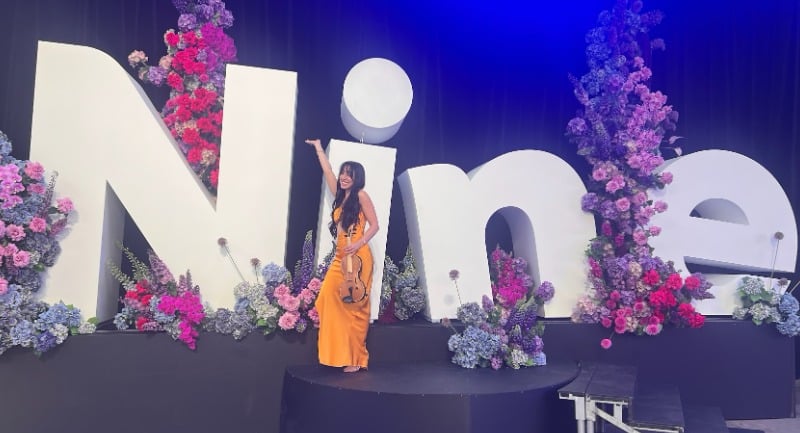
Revenue, vertical video, and unified sales across Nine + Stan + HBO Max lead the pitch at Nine’s 2026 Upfronts
Nine today staged its Upfronts presentation to a packed house. With the Winter Olympics set to kickstart the year, Nine presented a message of confidence to the audience in a 90 minute presentation at the Carriageworks event space in Sydney’s inner-city suburb Everleigh.
The Milano Winter Olympics led the content slate for Nine, but it was spin-off MAFS After The Dinner Party that delighted the back rows of the room where Mediaweek was perched.
$4 Billion in potential revenue for brands is missing
Nine has unveiled new research positioning Total TV, encompassing both free-to-air and BVOD, as a key driver of measurable business growth. Independent data from Mutinex, Kantar, Adgile, and Gemba reveals brands are missing out on $4 billion in potential revenue by under-investing in premium long-form video.
Launched as part of Nine’s 2025 Upfront, the Growth Project reframes Total TV from an “efficiency” channel to what the company calls an “effectiveness engine”, finding that Australian advertisers are collectively leaving an estimated $4 billion in revenue on the table by under-investing in high-quality long-form video content.
According to Nikki Rooke, Director of Sales – Total TV at Nine, the research was designed to help marketers better understand the medium’s full business impact. “Our mission is to move the industry narrative from merely chasing ROI efficiency to demanding measurable business effectiveness. This strategy has been specifically designed for clients and the industry more broadly to measure the role that TV plays in driving growth for advertisers. It’s a critical conversation to have with advertisers to ensure they are investing in the right areas – not leaving profit on the table by underestimating Total TV.”
The research shows Total TV contributes 22 per cent of all media-generated sales revenue – second only to search and significantly higher than any other video platform. It also demonstrates a proven ‘longevity effect’, with one week of TV activity generating an average of eight weeks of sales within the competitive automotive category.
Meanwhile, data from Mutinex challenges the perception that the 30-second commercial is in decline, revealing that the format is responsible for 47 per cent of all sales revenue generated by video advertising.
Kantar data highlights that brands excluding TV from their media mix miss out on an average of 39 per cent of total brand impact compared to those that include it. TV also delivers 1.4 times greater awareness and consideration than non-BVOD online video platforms.
Adgile analysis shows that Total TV drives immediate lower-funnel results, influencing one in three media-driven app interactions and website visits. The research points to a strong halo effect, with TV exposure amplifying performance across other marketing channels.
Brand safe, vertical video on 9Now
Nine has launched 9Now Stories, a brand-safe vertical video format delivering short-form content from trusted brands in a mobile-first environment.
The feature introduces a curated and shareable video feed focused on entertainment, sport, and current affairs. It is designed to sit within Nine’s owned and operated environment, with an emphasis on editorial oversight, trusted journalism, and brand safety.
Hamish Turner, Executive Director – 9Network & 9Now, explained that the vertical format aligns with how Australians increasingly consume media: “Vertical video has arrived on 9Now, delivering a mobile first destination with trusted content in a format they love. The experience provides a powerful tool for driving a daily habit with Australia’s best content. It is our first step in driving deeper user engagement and providing a new, high-value channel for our partners.”
The 9Now Stories videos are time-sensitive and linked to specific Nine brands or events. Users can click through to long-form programming on 9Now, with future updates expected to expand this integration to Nine’s publishing sites and Stan.
Nick Young, Commercial Director – Digital at Nine, said the new format also offers strong opportunities for advertisers: “9Now Stories is an exciting new format that puts brand safety first, ensuring any advertising appears alongside content of the highest quality and relevance. Over the next few months, we are committed to scaling the product to become a daily habit of 9Now users and as we build that scale we will be introducing integrated sponsorship opportunities and unique video ad capabilities.”
Nine unifies ad trading across 9Now, Stan Sport and HBO Max
Nine has announced a single, unified advertising solution across 9Now, Stan Sport and HBO Max, enabling brands to trade across the three premium video platforms using one CPM if they choose.
It consolidates ad data and programmatic access across the broadcaster’s streaming assets to simplify buying and improve efficiency. Advertisers will be able to continue buying each platform individually or leverage unified reach and frequency across all three. The new offering is said to offer greater scale for audience targeting and segmentation while streamlining campaign optimisation.
The addition of advertising on Stan Sport, along with Nine’s appointment as the exclusive Australian sales representative for HBO Max, has expanded the company’s premium digital video footprint. Nine said the combination offers advertisers “unparalleled impact and scale”.
Nick Young said: “We are focused on making it as easy as possible to access our highly-engaged customers and unlock the full potential of our data and programmatic stack. We’re cutting out waste so our clients can maximise as much of their budget into actual working media as possible, whilst maintaining the control and transparency they need.”
Nine launches PoweredTV to drive deeper brand storytelling
Nine has launched a significant expansion of its branded content division with PoweredTV, a new initiative designed to integrate brand storytelling across the broadcaster’s streaming and broadcast platforms, including the 9Network, 9Now and Stan.
PoweredTV places brand-funded storytelling directly into primetime formats and original programming, which Nine expects will resonate with audiences across platforms. The aim is to elevate the viewer experience by integrating brands as a natural part of the content narrative, rather than a disruption.
Lisa Day, Director of Nine Powered, said the move represents a strategic leap in how brands and audiences connect on screen: “Nine’s Powered division is already the best in class for seamless and effective integration, and PoweredTV will take this to an entirely new level by turning up the volume on our incredible offering.
“The key to our success is our commitment to co-creation: meaningfully weaving brands into the moments that matter by working in partnership with our production teams. This collaborative approach delivers superior, welcome storytelling and compelling results across the full Nine suite.
“We aren’t just integrating; we’re building original, primetime content that ignites conversation and forges powerful audience connections across our entire streaming and broadcast ecosystem.”
9Amplify to extend campaigns across social platforms
New social content solution 9Amplify is being pitched to brands as a way to seamlessly extend campaigns from broadcast and digital channels into social media environments.
Developed by Nine’s Powered division, it will roll out in the coming months and is offers amplification across major platforms including Instagram, TikTok, Facebook, and LinkedIn.
Through 9Amplify, Nine will leverage its network of talent, shows, creators, and social format handles to deliver short-form clips and complementary creative that integrate core brand messaging. The aim is to deliver a single solution for brands to expand reach across every touchpoint with minimal lift.
Lisa Day said: “9Amplify is enhancing Nine as the ultimate megaphone for brands. The new software allows us to instantly create a powerful stack of format-ready assets for our clients – from cut-downs of the primary content to complementary creative – ready to push out across every major platform. We’re extending the massive impact of our shows and talent across the full social spectrum, delivering unprecedented campaign efficiency.”
Upgrades to self-service for Australia’s 2.2 million SMBs
Nine has announced a major upgrade to its self-serve advertising platform, Nine Ad Manager, introducing new features aimed at making digital ad buying more accessible and effective for direct advertisers and Australia’s small business sector.
Features include media planning tools, invoicing capabilities, and ready-to-use campaign templates designed to streamline the ad buying process. A key addition is an improved planning function that lets users map out multi-channel campaigns across Nine’s video, display, search and social inventory. New invoicing options, credit terms, and support for PayTo bank transfers will also simplify financial management for businesses and agencies alike.
Nick Young said: “Nine Ad Manager has proven to be an effective way for Australian small businesses to reach specific households, with around 4000 clients using the platform so far. We are a brand safe environment and these product upgrades will ensure SMBs’ campaigns will have even more effectiveness using our trusted premium content on the most powerful screen in the home.”
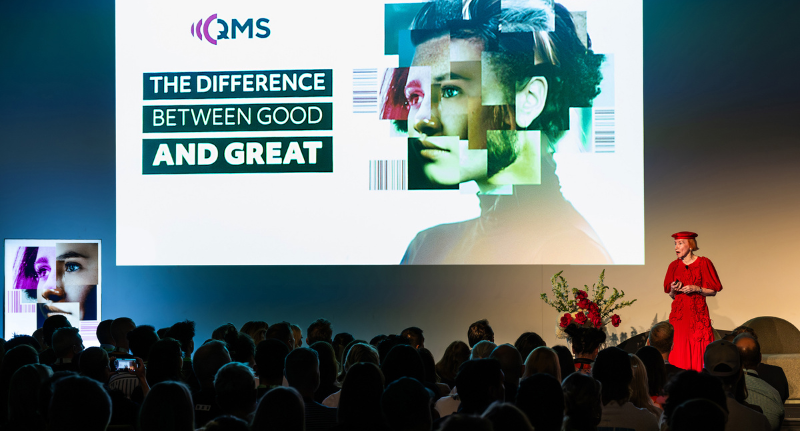
QMS launches landmark research revealing the top priorities shaping marketers’ investment plans
After years of chasing reach and efficiency, Australia’s marketers are resetting their focus to build brands anchored in meaning, creativity, and quality.
That was the clear message from new research presented by QMS at SXSW Sydney, during the “Great Minds, Greater Brands: The Global Marketing Face-Off That Decodes The Future Of Enduring Brands” session, which explored the changing priorities of brand leaders in Australia and the UK.
The findings and current trends in marketing were then unpacked by a panel of marketers from Netflix, Brown Family Wine Group, Coles, and Skingraphica in a lively debate, hosted by QMS Global Advisor and member of the MFA Hall of Fame, Anne Parsons.
The study, aligned to research conducted by Ocean Outdoor UK, surveyed more than 25 Australian marketing leaders across 18 major advertising categories questions around today’s challenges and the most important factors in strategy
The QMS study surveyed marketers about where investment, confidence, and creative energy are heading.
The results showed that while Australia’s marketers remain optimistic, they’re under pressure to balance growth, measurement, and long-term brand health.
“In Australia, we had three big challenges, sustainable growth, unified measurement and attention,” said Parsons.
“In the UK, AI was the biggest challenge, and that was really interesting. But here, more than half of our audience said it’s actually about differentiation.”
The research also revealed that Australian marketers remain heavily focused on brand quality and creativity as the key to standing out, and that DOOH has become a central channel for driving both.
“Creativity took a huge part of what they were talking about, and when they were talking about what’s making creative better, they said the power of the screens has made the creative much braver,” said Parsons.
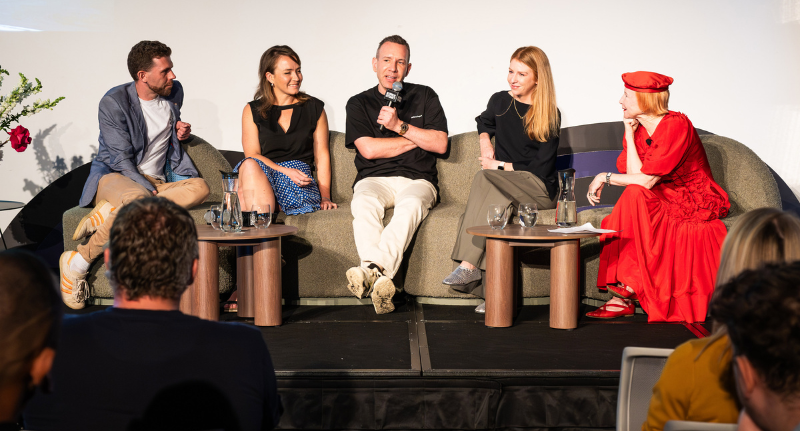
The panel of Tony Broderick, Georgia Bruton, Mat Baxter and Bianca Mundy discussed big issues in marketing with Anne Parsons.
Balancing brand and performance
For Georgia Bruton, CMO of Brown Family Wine Group, the research reflected a tension familiar to many marketers on how to build long-term equity while delivering short-term performance.
“The balance between long and short term only works when you know what success looks like for your brand. If you’re measuring brand love, then metrics like awareness and emotional connection should be front and centre, things that tell you how people feel about you, not just what they buy.”
That sentiment was echoed by Bianca Mundy, Head of Brand and Media at Coles, who described the retailer’s challenge as connecting daily customer transactions with deeper brand sentiment.
“As a supermarket, we must get customers in the door to shop with us daily and weekly, but we’re also very focused on what do customers think about our brand. When we think about the short term and the long term, we’re really thinking about one thing, are we really clear what customers want to see from us?”
Mundy noted the balance between tactical and brand activity often comes down to how the creative lands in different environments.
“Good creative is really different depending on the channel you’re on,” she said. “We look at it through both lenses: what builds emotion and what drives response.”
Adding to the debate, Mat Baxter, CEO and Founder of new skincare brand Skingraphica, said marketers should stop thinking of short-term and long-term marketing being separate. Citing Nike as an example, he pointed out that brands struggle when they think in terms of one or the other.
“Even brands as iconic and as smart at branding as Nike have disproportionately, in my view, been way too reliant on lower funnel activity, and have started to realise that they’ve started to do that at the expense of their brand.
“For me, I don’t think it’s one or the other. They’re the same thing. Marketing is marketing.
“If you’re a brand believer, then you have to also believe that you’ve got to build and nurture your brand. It’s sort of like a tree, right? If you think of a tree that sprouts fruit, and fruit is what you’re selling, then if you don’t water the tree it dies and there’s no fruit.
“A lot of marketers have stopped pouring water on their tree and then wonder why the fruit is not juicy.”
Baxter argued that while performance pressures have never been greater, consistency and creative courage over time are what sustain brand equity.
The Power of Creativity
Tony Broderick, Director of Marketing for Netflix ANZ, agreed that true brand-building requires creative bravery and a willingness to act, especially in the market he works in.
“It’s really hard to do great work if you have to make sure it’s almost perfect before you’ve launched it. If you’re working in culture, you’re following a trend line that hasn’t completely been drawn, so you’re going to have to take risks and do things that cannot be measured best or easiest.
“We do create real intention of making sure there is a good data-led starting point. But ultimately, most of our work should be a risk to some extent.
“I would say the most important thing is that we just come together afterwards and we really debate the outcomes really openly and honestly.”
For Baxter, great creativity should come from instinct over data, and the willingness to back a bold idea even when there’s no immediate guarantee it will work.
The new measure of success
As the QMS research made clear, marketers in Australia are no longer satisfied with chasing visibility.
Parsons summed it up best when talking about the QMS research.
“There was a constant reference to moving from reach to attention. We’re moving from data and measurement to knowledge. We’re going from cost to value. We’ve summarised it as being the difference between good and great is actually quality.”
“The marketing landscape has never been more complex, and this research focuses on the universal challenges facing marketers while highlighting the unique strengths of the Australian market.
“What we’re seeing is a mature understanding that sustainable brand-building requires moving beyond simple reach metrics to encompass quality, attention and measurable effectiveness. The insights will help shape how brands approach enduring success in today’s rapidly evolving environment.”
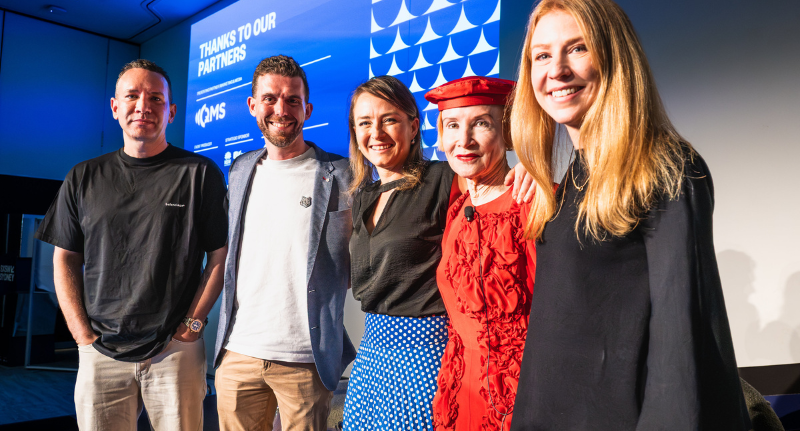
The panel at SXSW Sydney.
What does this mean for QMS?
At the close of the event, Christian Zavecz, Chief Strategy Officer at QMS Media reflected on how the findings will shape their approach, as DOOH evolves beyond reach into more influence.
“This backs up what we’ve been saying to our clients,” he told Mediaweek afterwards. “We speak to our clients that DOOH is just like another digital media.
“You can utilise tech to change messaging, to make it contextually relevant. You can use data to inform that. So, it’s a great space to be because it is continuing to be innovative and growing. It’s growing in terms of spend. It is very competitive, which keeps you on your toes. You’ve got to continue to innovate and do things better.”
“But this research also allows us to take a broader view, we can now have a conversation with our clients with a greater perspective on what they are really after.
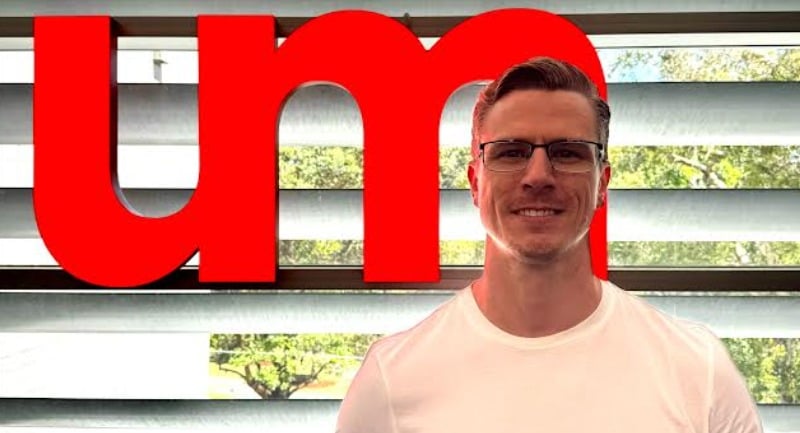
UM Australia promotes Andrew Clift to Sydney general manager
UM Australia has promoted Andrew Clift to general manager of its Sydney office, elevating the long-time leader from his previous role as managing partner. The move recognises Clift’s decade-long contribution and his broad expertise across media, marketing, and communications. The appointment is effective immediately.
What UM says
Anathea Ruys, CEO, UM Australia, said the promotion reflects the agency’s commitment to developing talent from within. “Promoting from within is always a proud moment for UM, and Andrew is the right talent to lead our Sydney office into 2026 and beyond.
“He is deeply immersed in the business and has an outstanding track record of delivering real value and impact for our clients. He will bring new energy and leadership to help our Sydney team continue to thrive.”
Ruys continued: “Andrew’s passion for his craft has always been unwavering and his leadership and mentoring skills have been crucial to enable UM grow, foster innovation and uphold the agency’s ambition to deliver exceptional client results.”
Clift’s priorities
Commenting on his promotion, Clift said: “I’m thrilled to take on this next chapter at UM and lead our team in such an exciting period for our industry. Over the past decade, I’ve been fortunate to work with incredible clients and teams, and this role is an opportunity to continue building on that foundation and help solve the complex challenges businesses face today.
“Under my leadership our aim will be to continue to drive innovation and deliver outstanding outcomes for clients as we move into 2026 and beyond.”
Experience and remit
Bringing strategic insight to every client engagement, Clift has built a reputation for innovative, client-focused solutions across digital and traditional channels. His career spans account management, media planning and buying, and client communications, giving him a holistic view of UM’s business and its clients.
Clift has been with UM since 2016 and will now lead the Sydney team as it continues to grow and service a broad roster of clients.
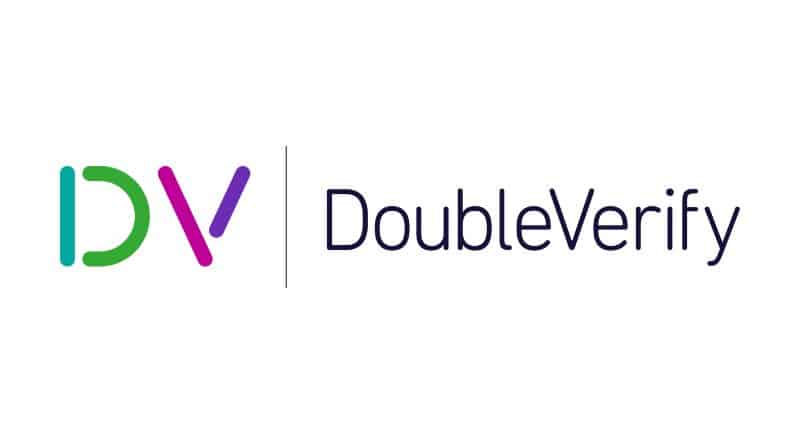
DoubleVerify expands Microsoft Advertising integration to boost ad transparency
DoubleVerify has expanded its partnership with Microsoft Advertising, extending measurement coverage across Audience ads on Microsoft-owned properties and publisher partners. The update also includes the launch of DV Campaign Automator™, designed to simplify campaign trafficking for advertisers and agencies.
With the enhanced integration, advertisers can now authenticate media quality across Microsoft’s premium inventory — including MSN, Outlook, and Microsoft Casual Games — as well as campaigns using Microsoft’s proprietary in-market audience data. The capabilities cover display, native, and video ad formats.
“We are excited to build on our successful integration with Microsoft Advertising and expand our measurement solutions across the platform’s proprietary inventory and data,” said Mark Zagorski, CEO of DoubleVerify. “This release builds on DV’s leadership in driving media effectiveness for advertisers, ensuring our clients can seamlessly measure campaign delivery, optimise their advertising efforts, and ultimately, drive superior business outcomes with Audience ads.”
New automation for ad workflow efficiency
The new DV Campaign Automator™ simplifies and automates the campaign setup process across Microsoft Advertising — from campaign creation and settings to tag management, billing, and reporting. The tool aims to reduce manual work and enable faster campaign execution with full verification coverage.
Danielle McMeekin, VP, Global Performance Sales at Microsoft Advertising, said the expanded integration would deliver greater value to clients. “The extension of our integration with DoubleVerify, which includes enhanced third-party measurement and new trafficking capabilities, allows us to deliver additional insights to our shared clients for more successful campaigns,” she said.
Deeper transparency and performance insights
Advertisers using the expanded integration can access detailed campaign analytics through DV PinnacleⓇ, DoubleVerify’s unified reporting platform. The solution enables visibility into key verification metrics such as brand suitability, viewability, and invalid traffic detection.
The integration builds on DoubleVerify’s Media AdVantage Platform (MAP) framework, which unifies its verification, optimisation, and outcome measurement products. According to the company, MAP represents a shift from verification-only services toward a full-spectrum media effectiveness platform.
Audience ads, powered by Microsoft AI and trusted data, allow marketers to reach high-intent audiences across Microsoft sites and third-party publishers, combining automation with transparency and control.
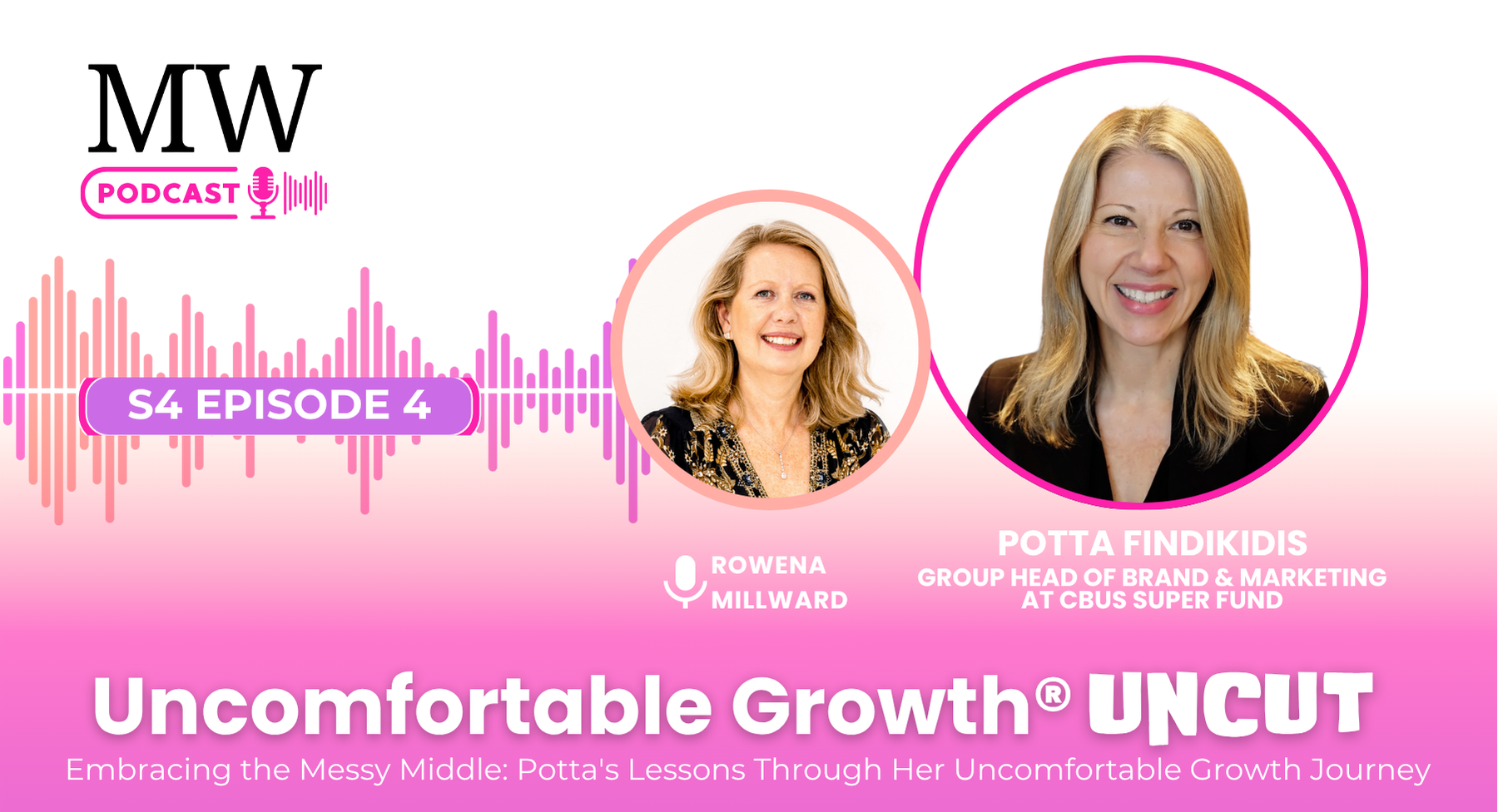
Uncomfortable Growth® Uncut. Season 4, Episode 4 – Potta Findikidis
In the latest episode of Uncomfortable Growth® Uncut, Rowena Millward engages in a heartfelt conversation with Potta Findikidis, exploring the intricate dance of personal and professional growth. As they share their stories, listeners are invited to reflect on their own journeys and the challenges that shape them.
Potta’s story is one of resilience, marked by a significant career transition after 16 years at Telstra. Leaving a role where she felt at home was not just a professional change; it was a profound personal journey. She candidly discusses the identity crisis that followed her departure, revealing how the absence of a familiar environment can leave one feeling lost. This resonates with many who have faced similar crossroads, highlighting the emotional complexities of career changes.
The discussion takes a poignant turn as Potta opens up about her IVF journey. This deeply personal experience sheds light on the often-unspoken struggles many face when it comes to motherhood. Potta’s reflections on the societal pressures and personal expectations surrounding motherhood are both relatable and enlightening. She emphasizes that navigating these challenges does not define one’s worth or success, a message that is crucial for many women today.
Throughout the episode, the theme of resilience emerges as a powerful force. Potta shares how her experiences, both good and bad, have built her resilience muscle. She believes that true resilience is forged through adversity, and her journey exemplifies this belief. As she and Rowena discuss the importance of having a supportive network, it becomes clear that connection and community play vital roles in overcoming life’s hurdles.
My three favourite quotes from Potta’s story are:
“I think I’ve always built resilience over my career and through personal and professional. But my 40s, I think is really where resilience muscle is really built out, and I think that’s really helped me now.“
“I’ve always naturally been curious and I’ve never really feared the unknown, and I think has definitely grown over the years as well.”
“You can get through anything if you’ve got a really tight network around you.”
Tune in and discover how embracing discomfort can lead to profound transformation.
The world doesn’t need more stories of success; it needs honest conversations about hard challenges, vulnerability, and proof that trials can ultimately become triumphs.
That’s why the Uncomfortable Growth® Uncut podcast was born. It’s a reminder that struggle and success are intrinsically linked, that growth is rarely easy, and that the moments we feel most uncomfortable are where our greatest breakthroughs lie.
Media
ACCC opens review into Seven–SCA merger
As TV Blackbox’s Kevin Perry writes submissions are now open until 2pm AEST on 29 October, with the watchdog calling for industry and public feedback on how the deal could affect competition across TV, radio and digital media.
High Court backs Candace Owens visa ban
Radio Info reports Owens had planned a 2024 speaking tour, but Burke rejected the application, saying, “Australia’s national interest is best served when Candace Owens is somewhere else.”
Inside YouTube’s quiet power play with the NFL
But, as Alex Weprin The Hollywood Reporter, insiders knew it was a statement: YouTube’s not just streaming highlights anymore, it’s courting live sport dominance.
AI
ChatGPT to open erotica to verified adults
As Pui-Guan Man writes in The Sydney Morning Herald, he says the move is grounded in a “treat adult users like adults” ethos and follows steps the company has taken to mitigate mental health risks.

